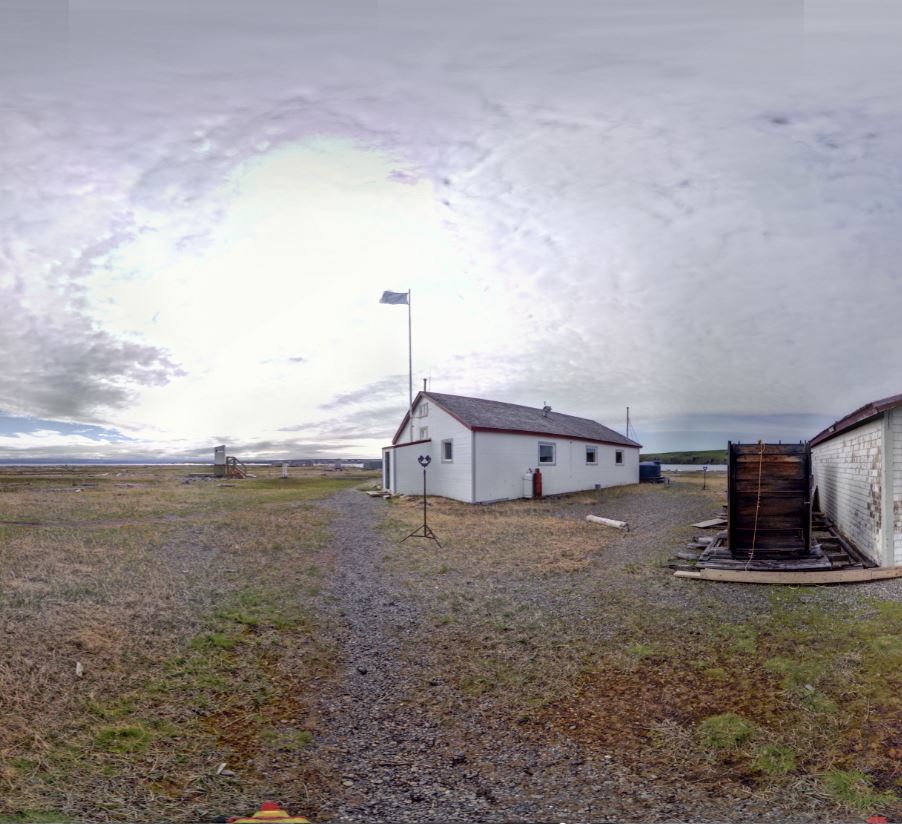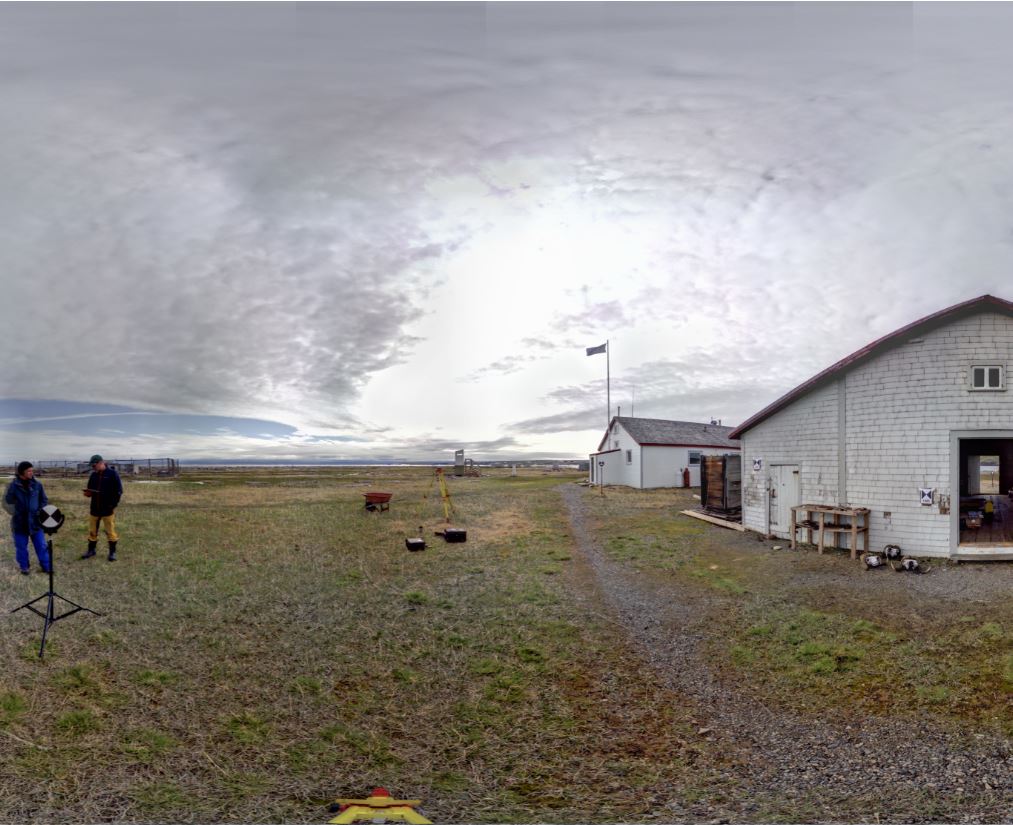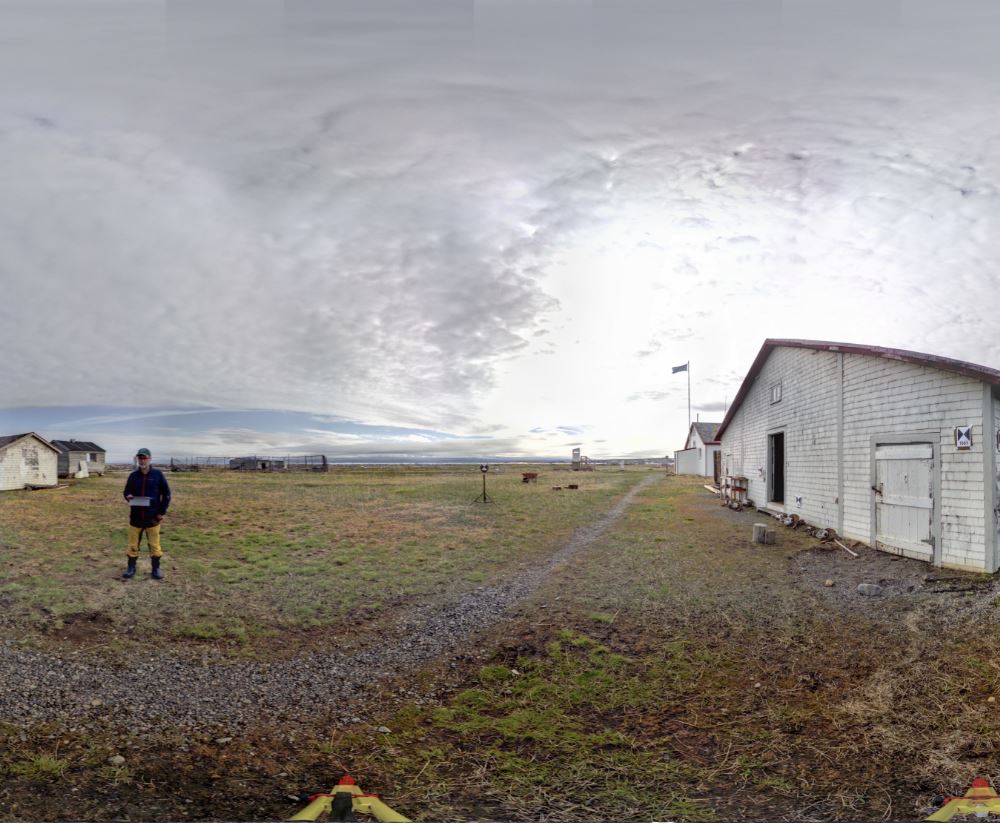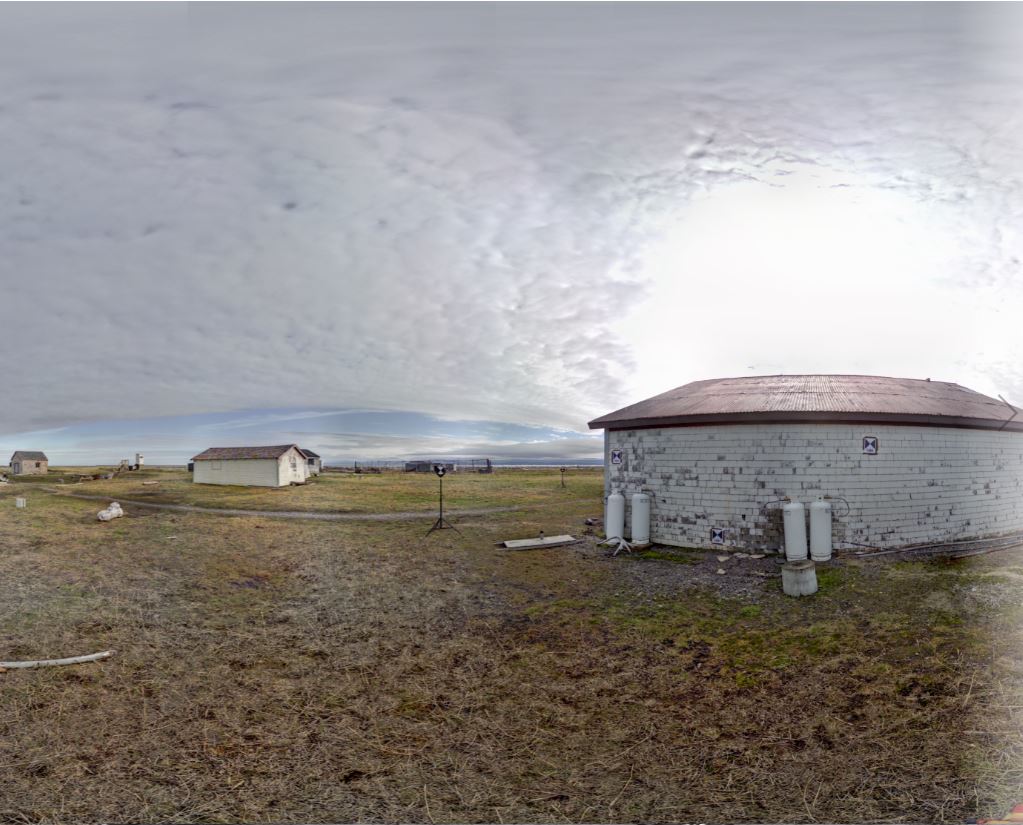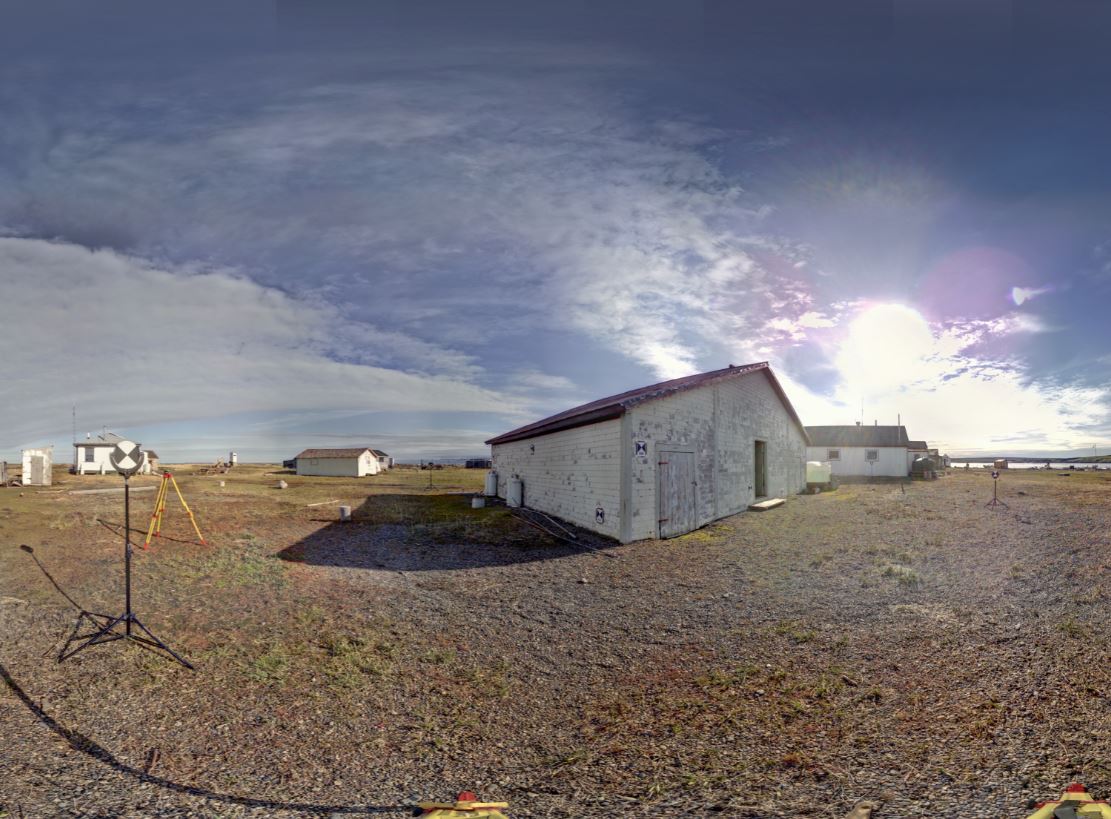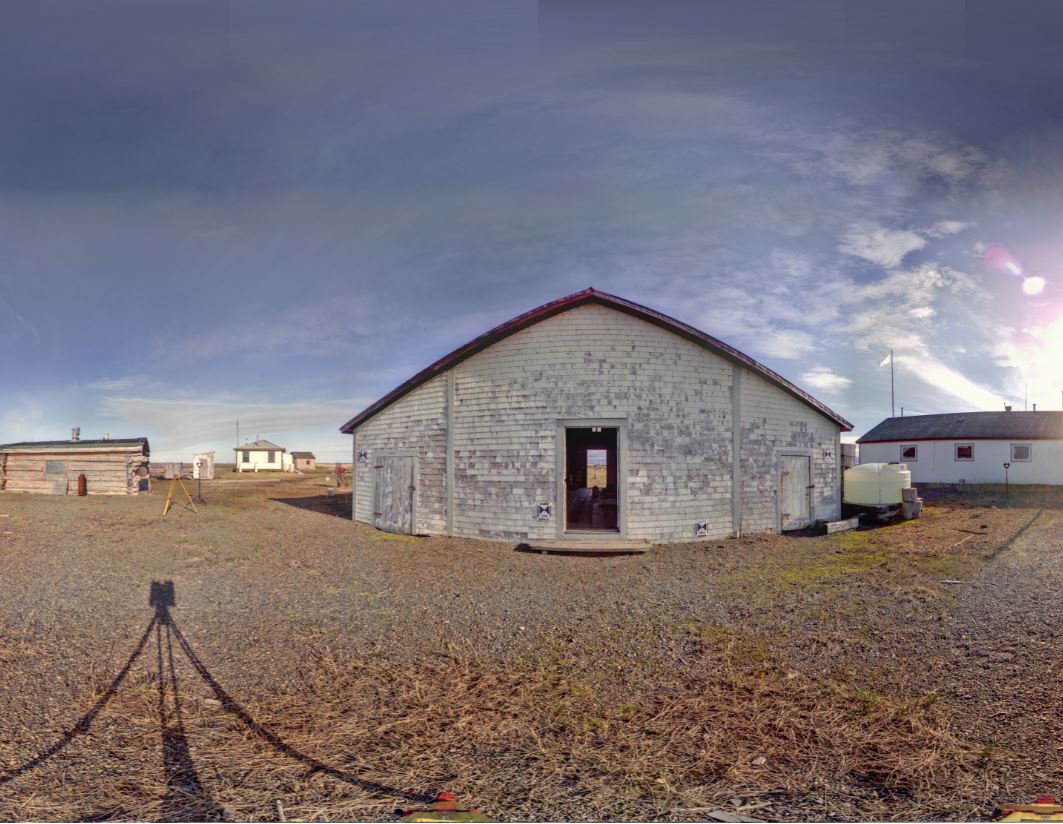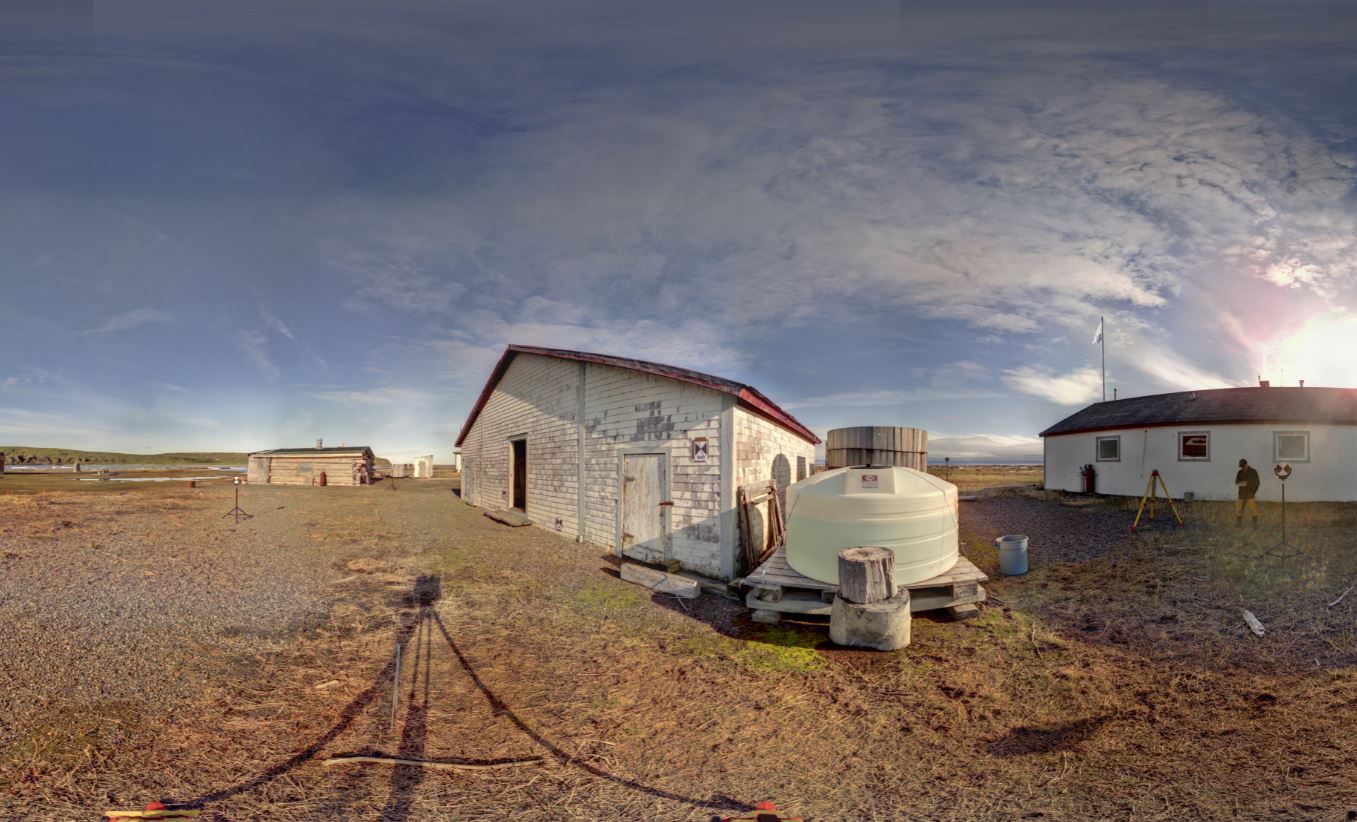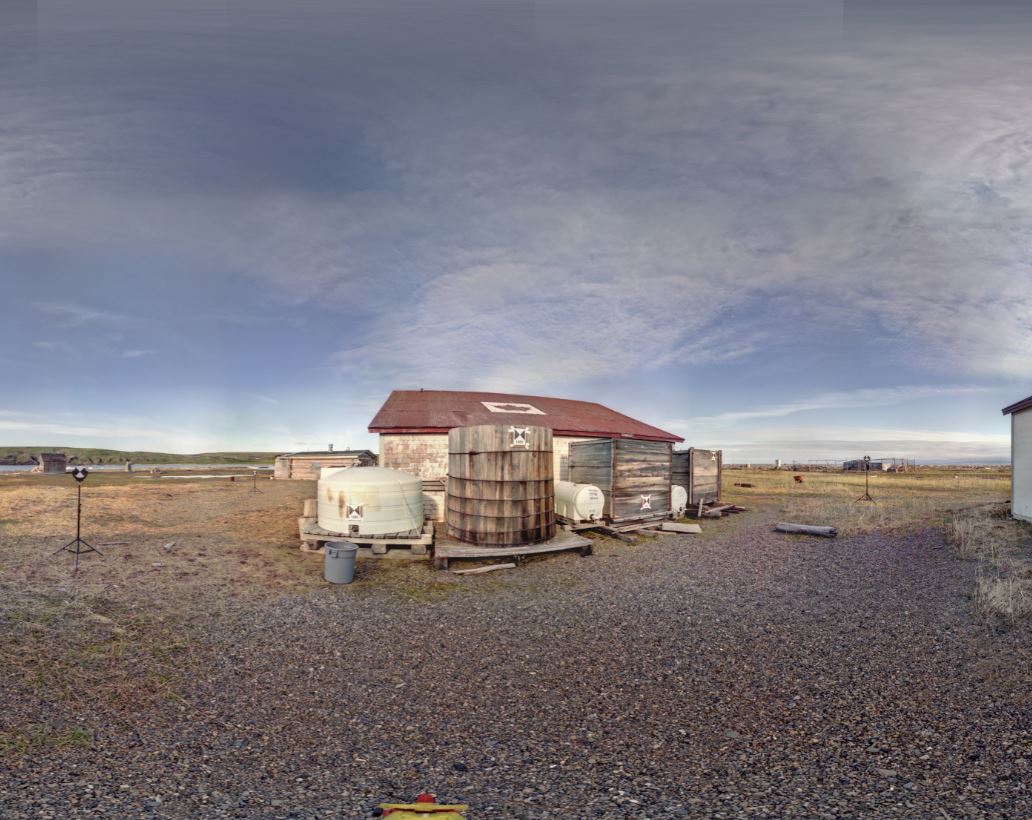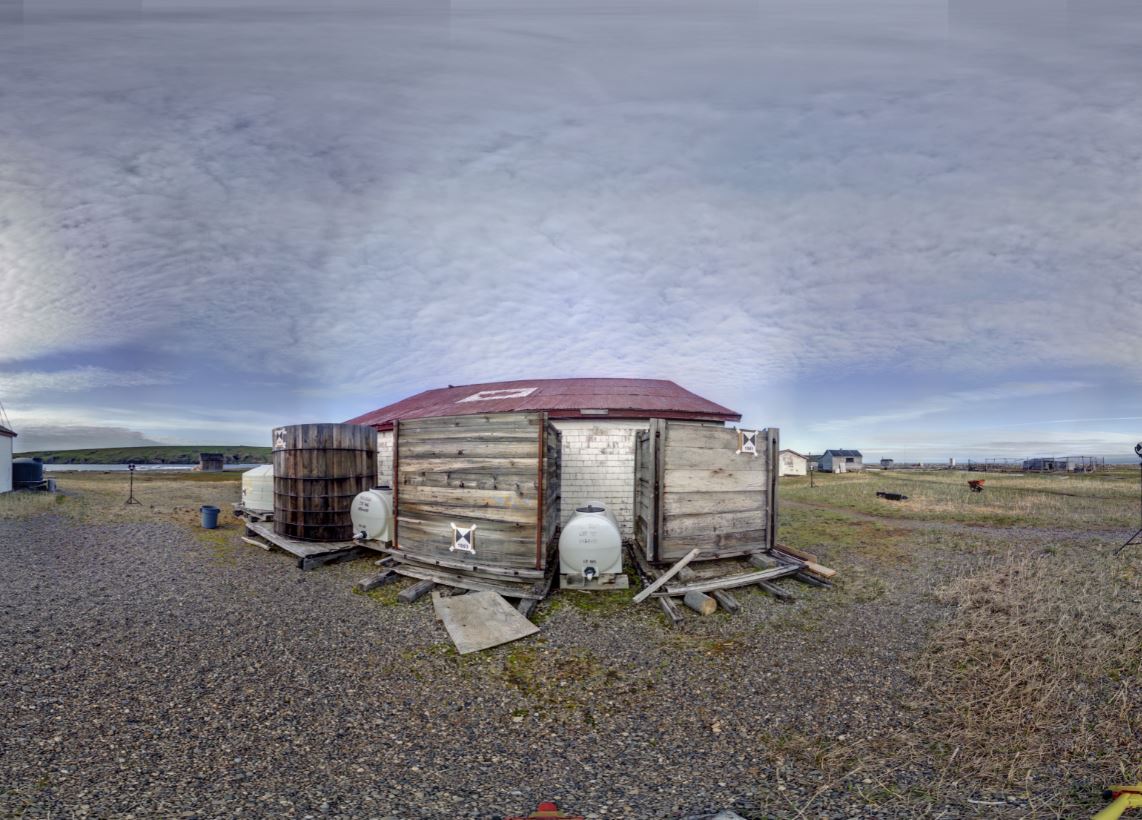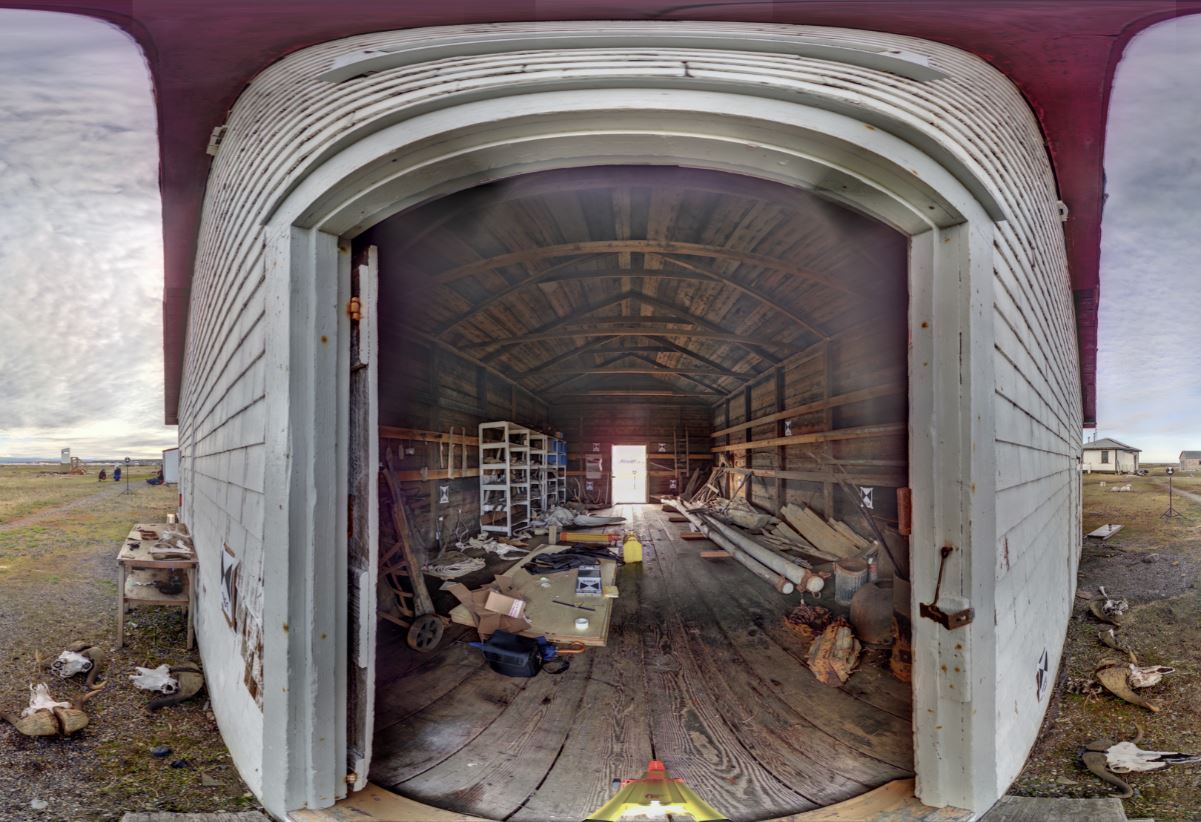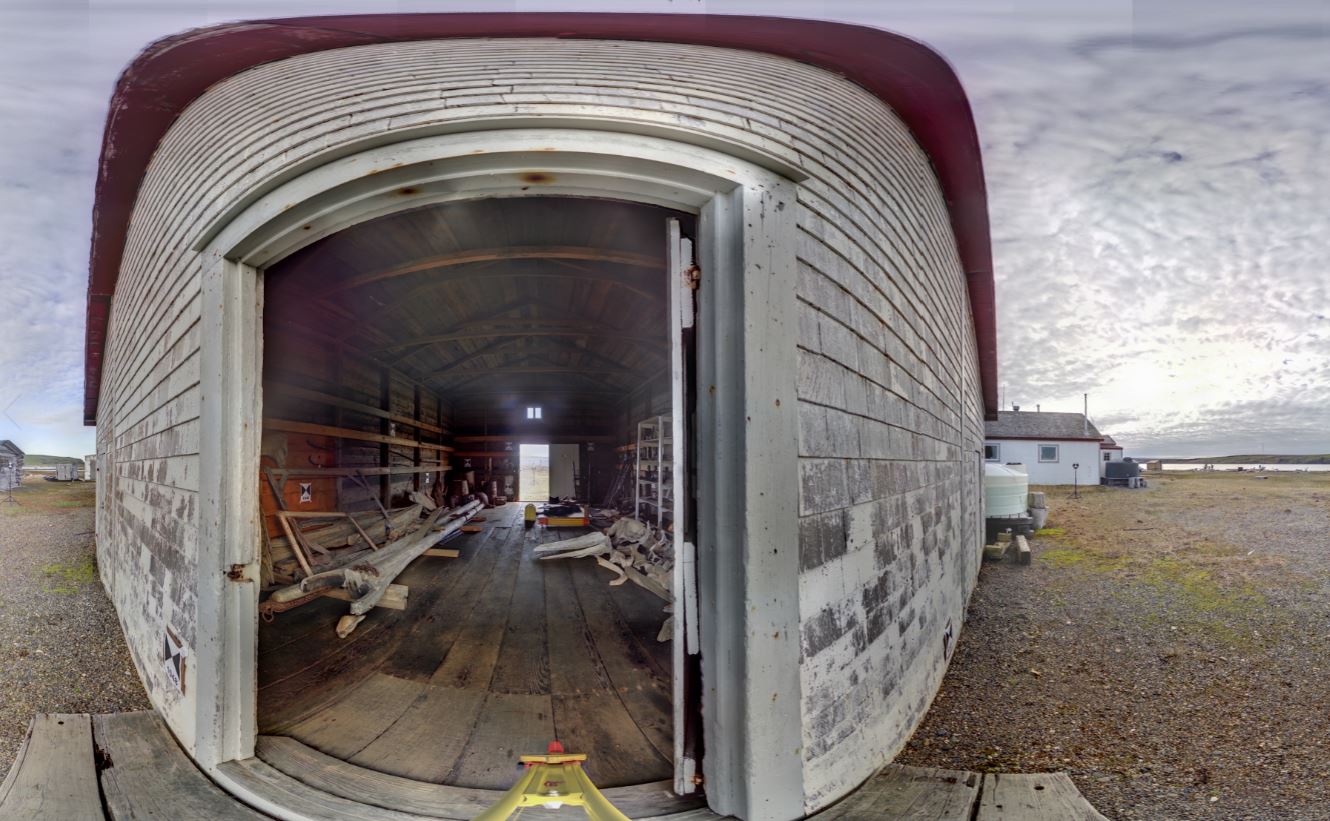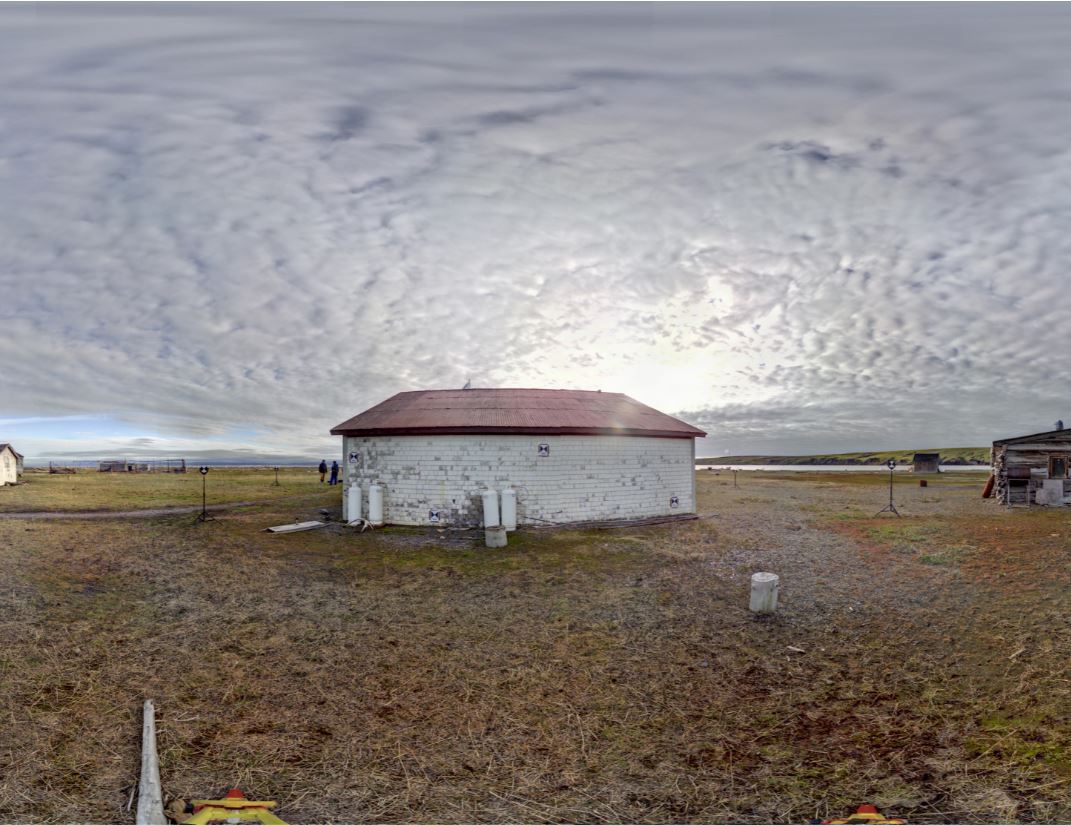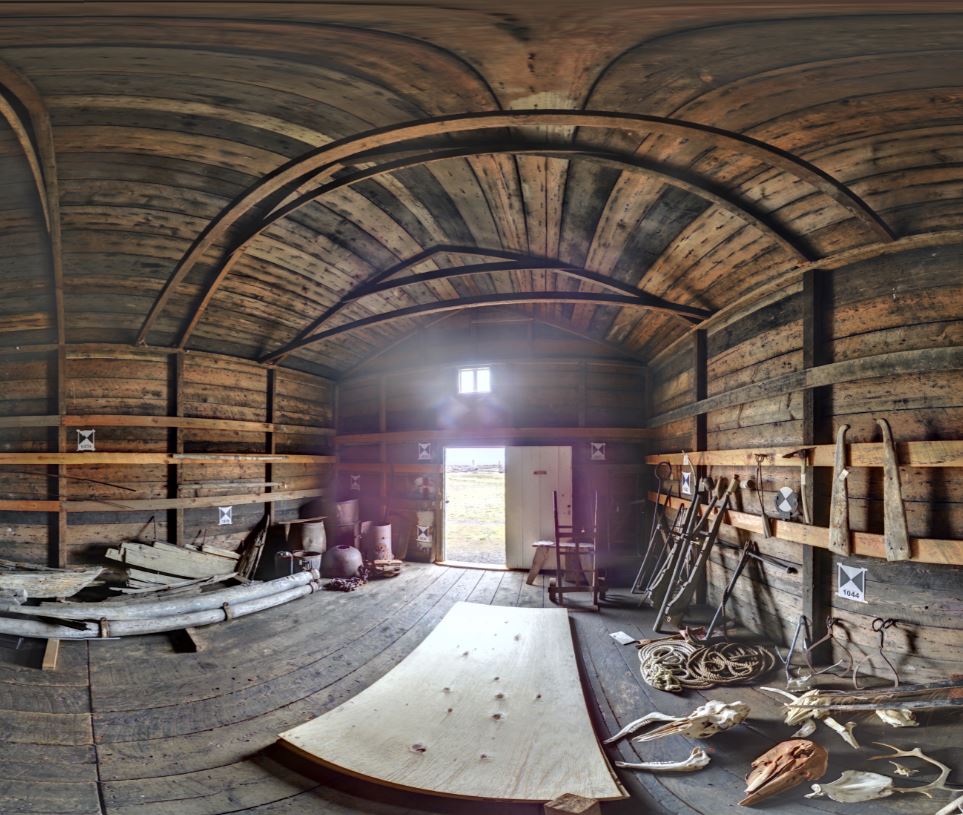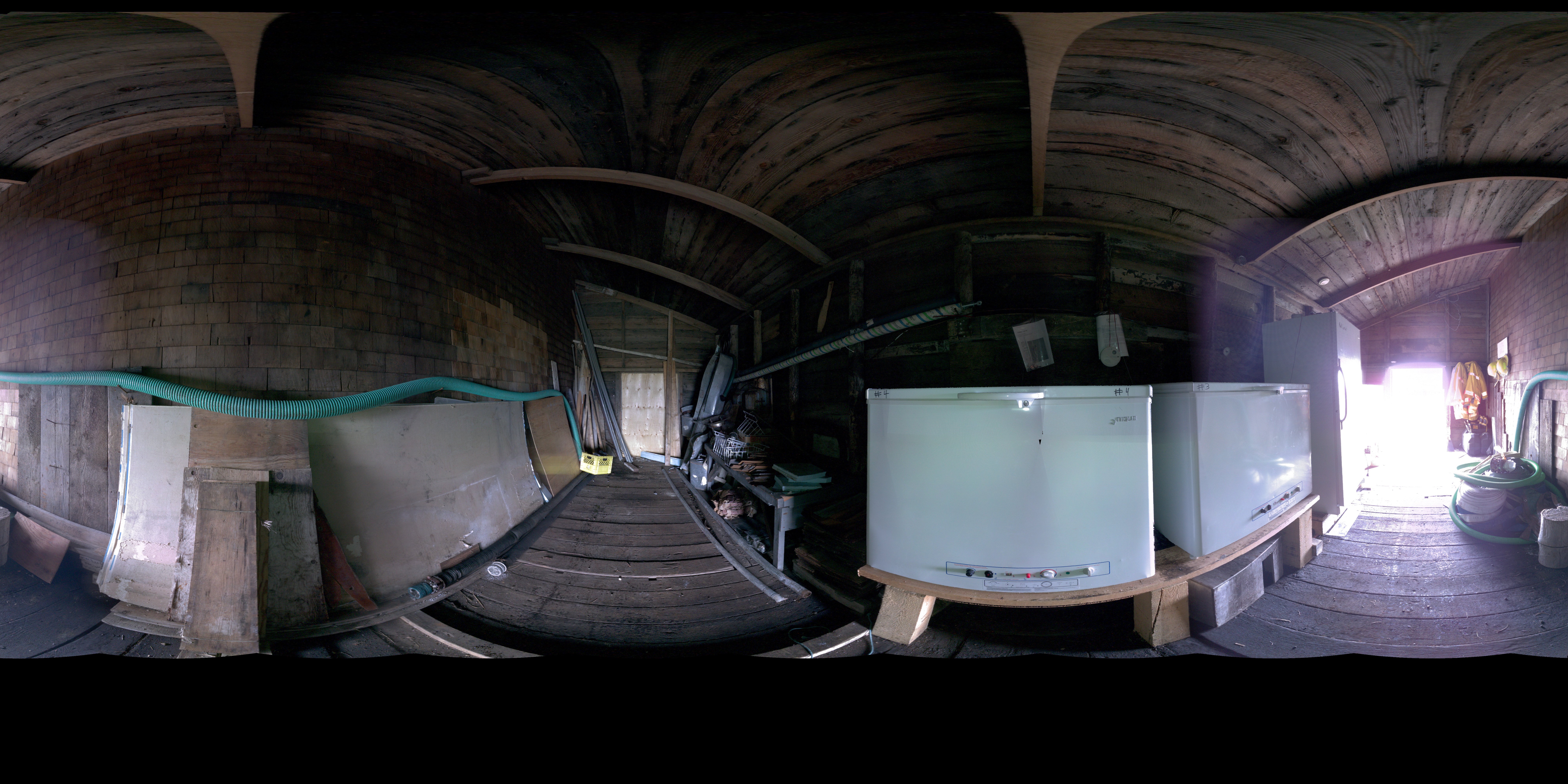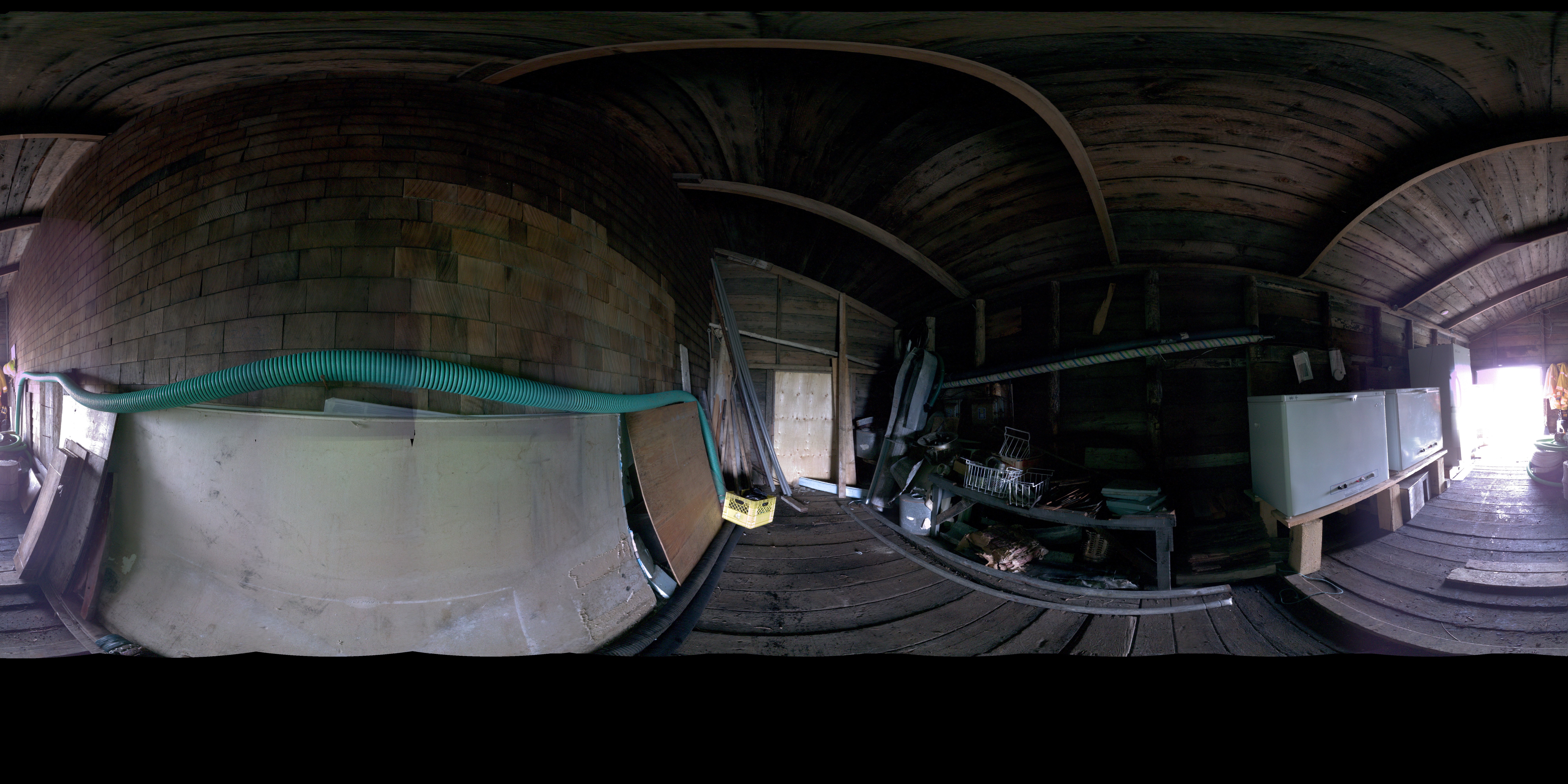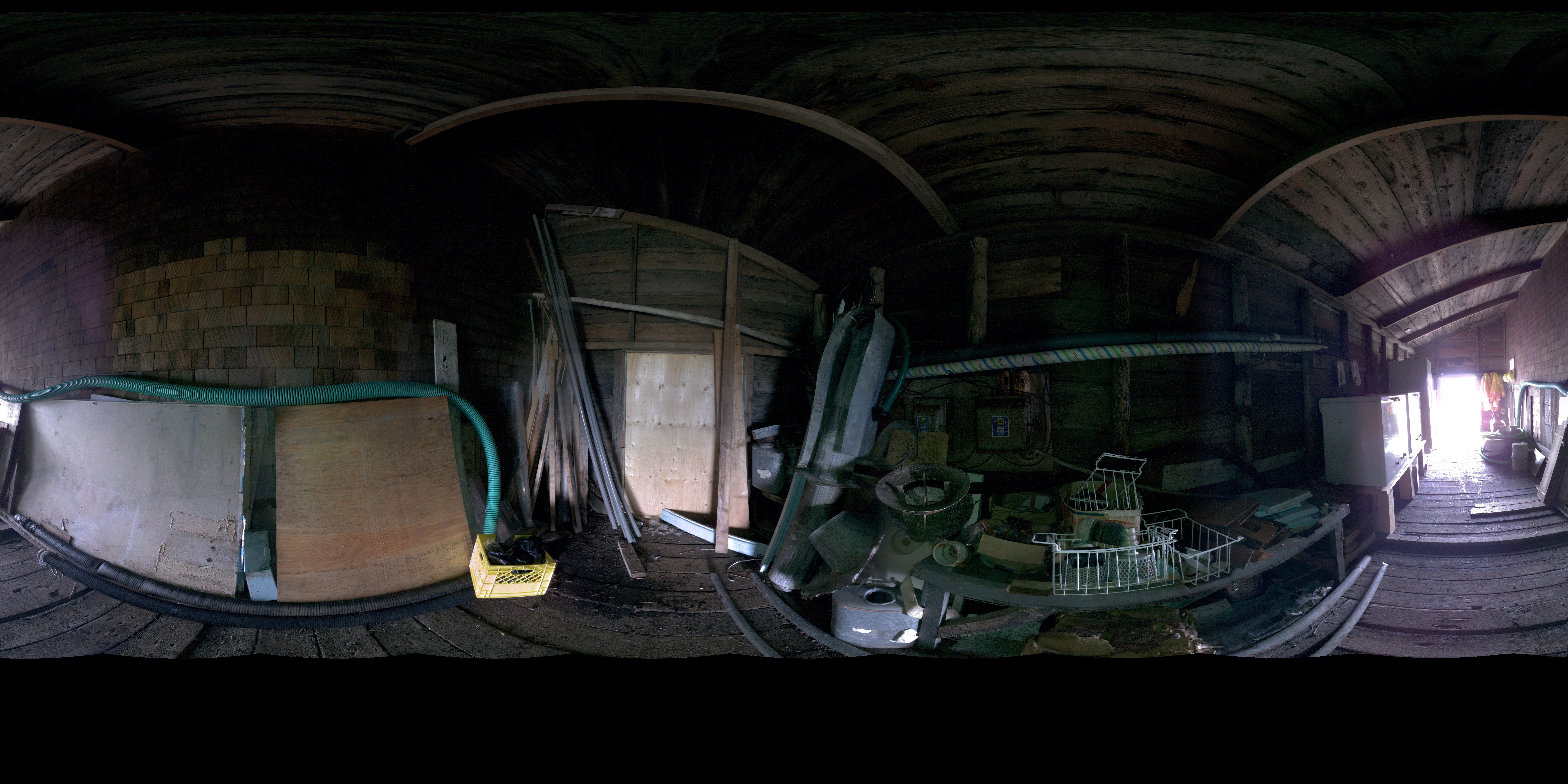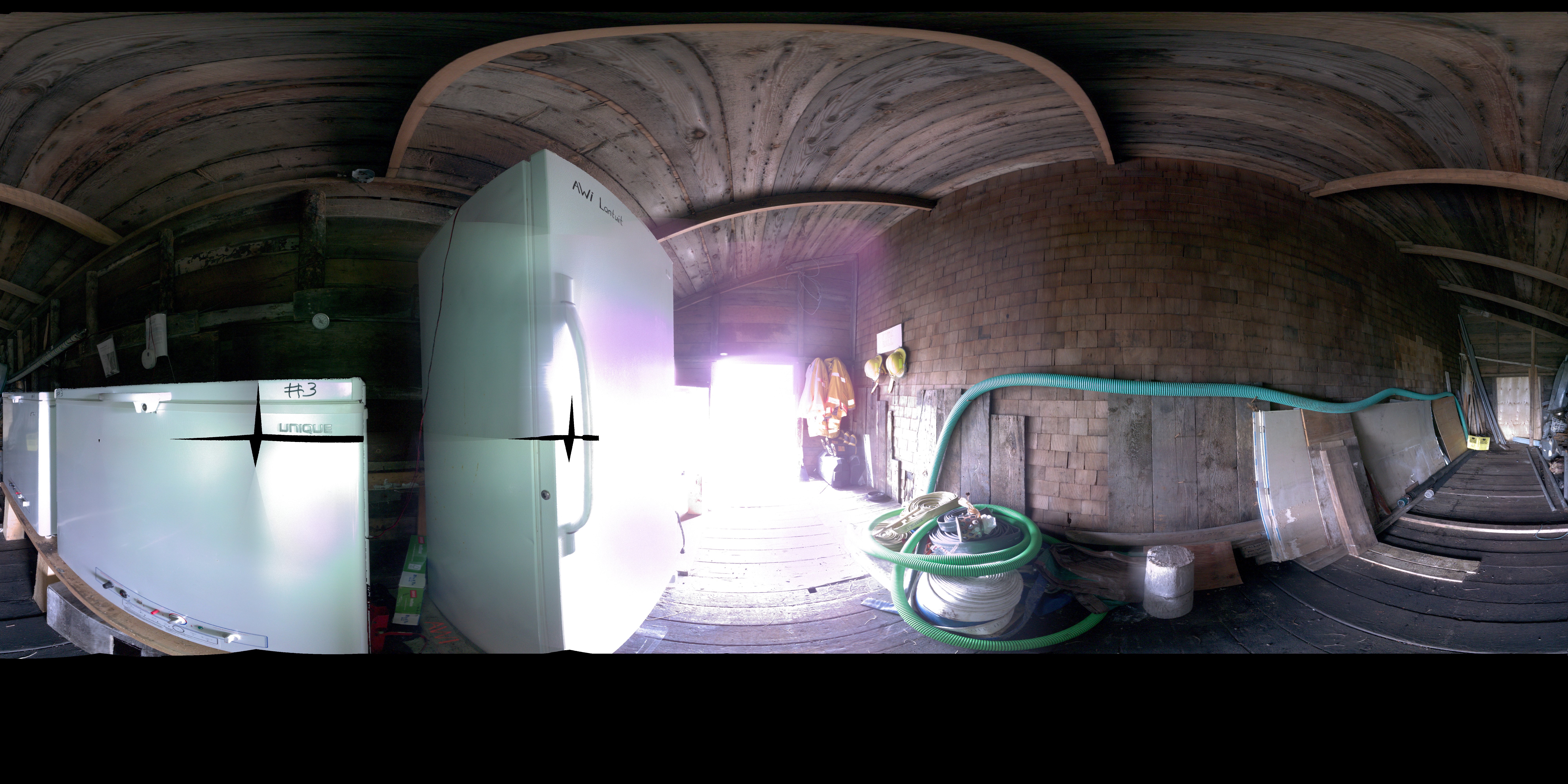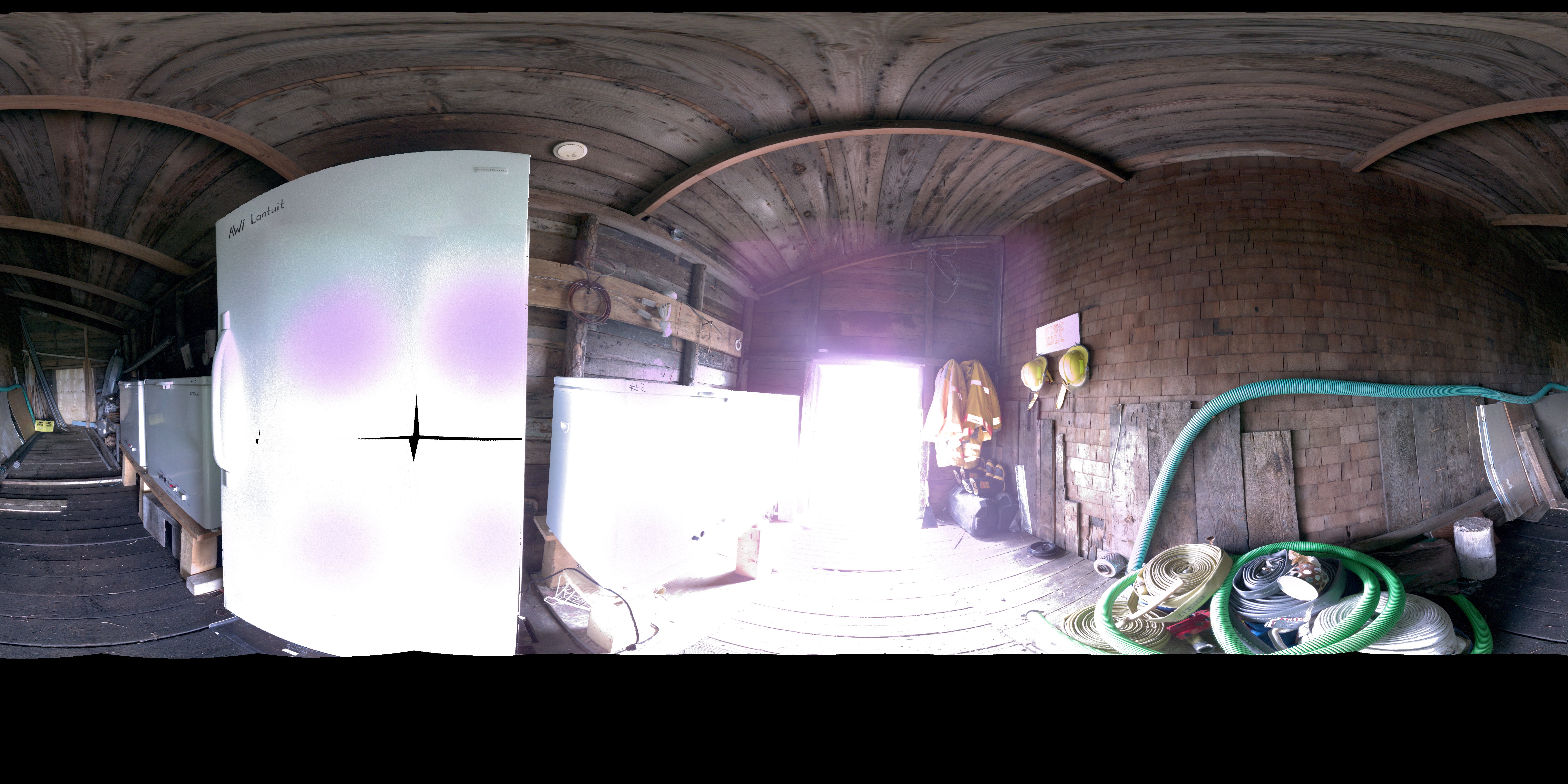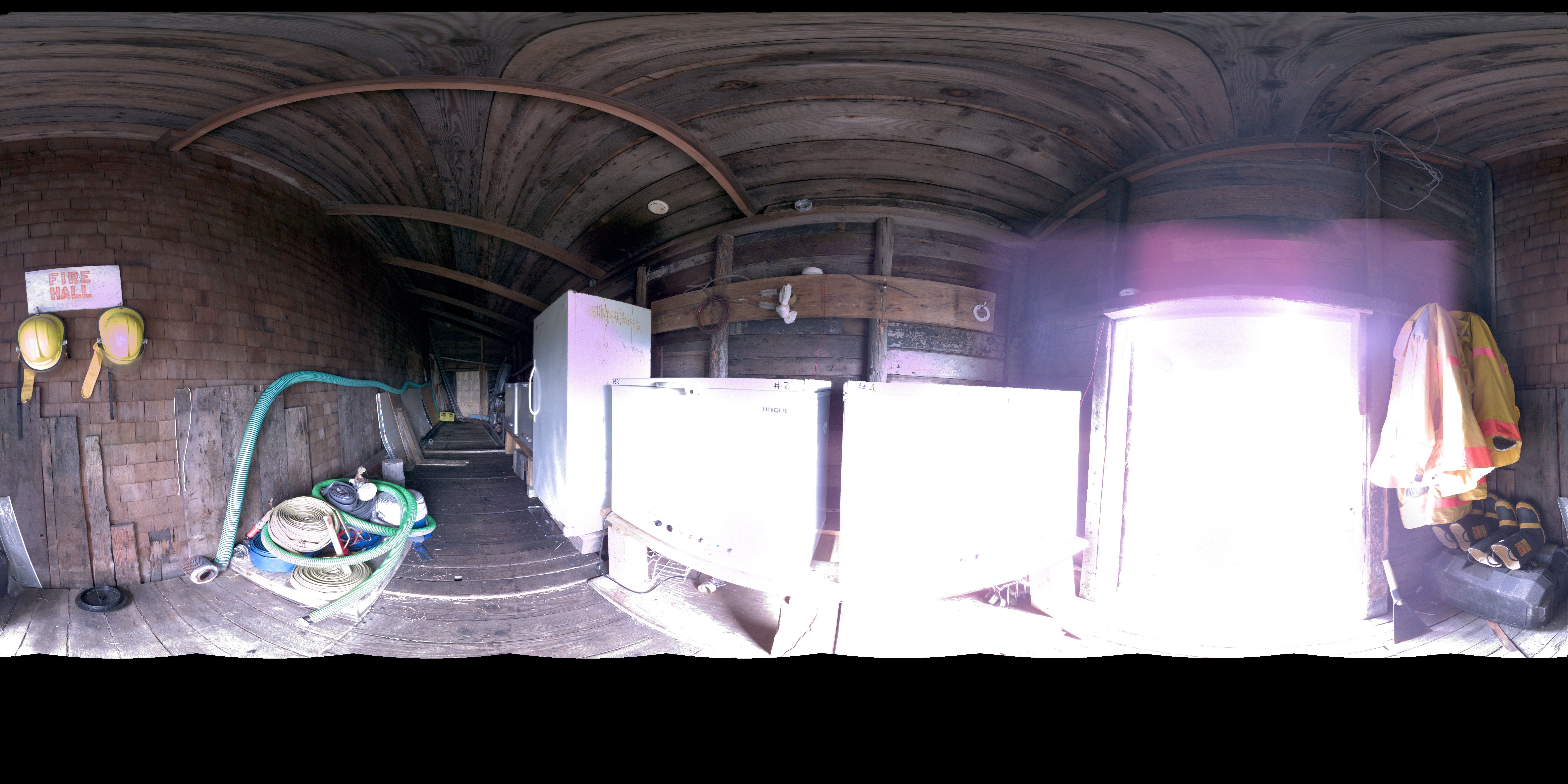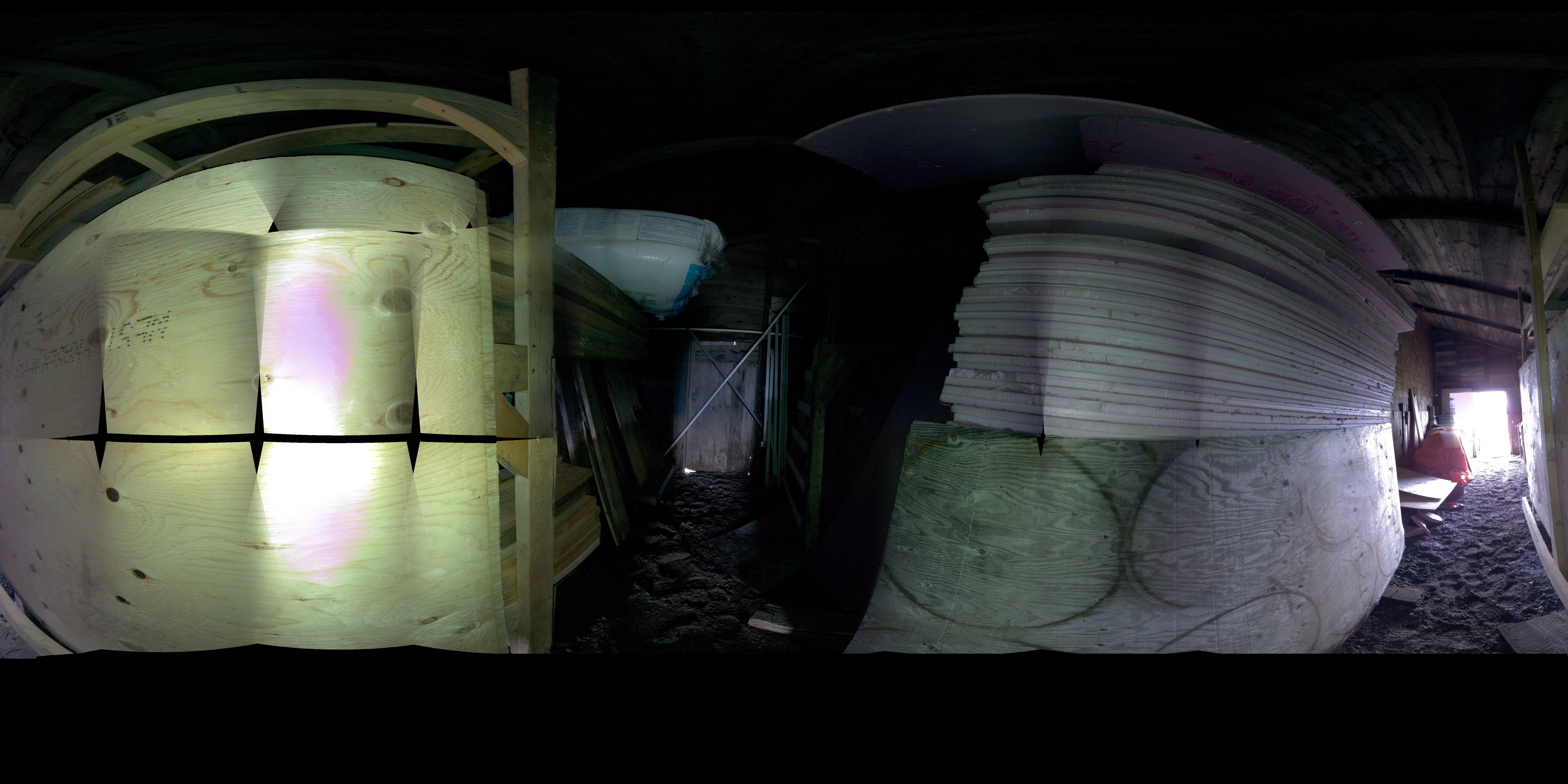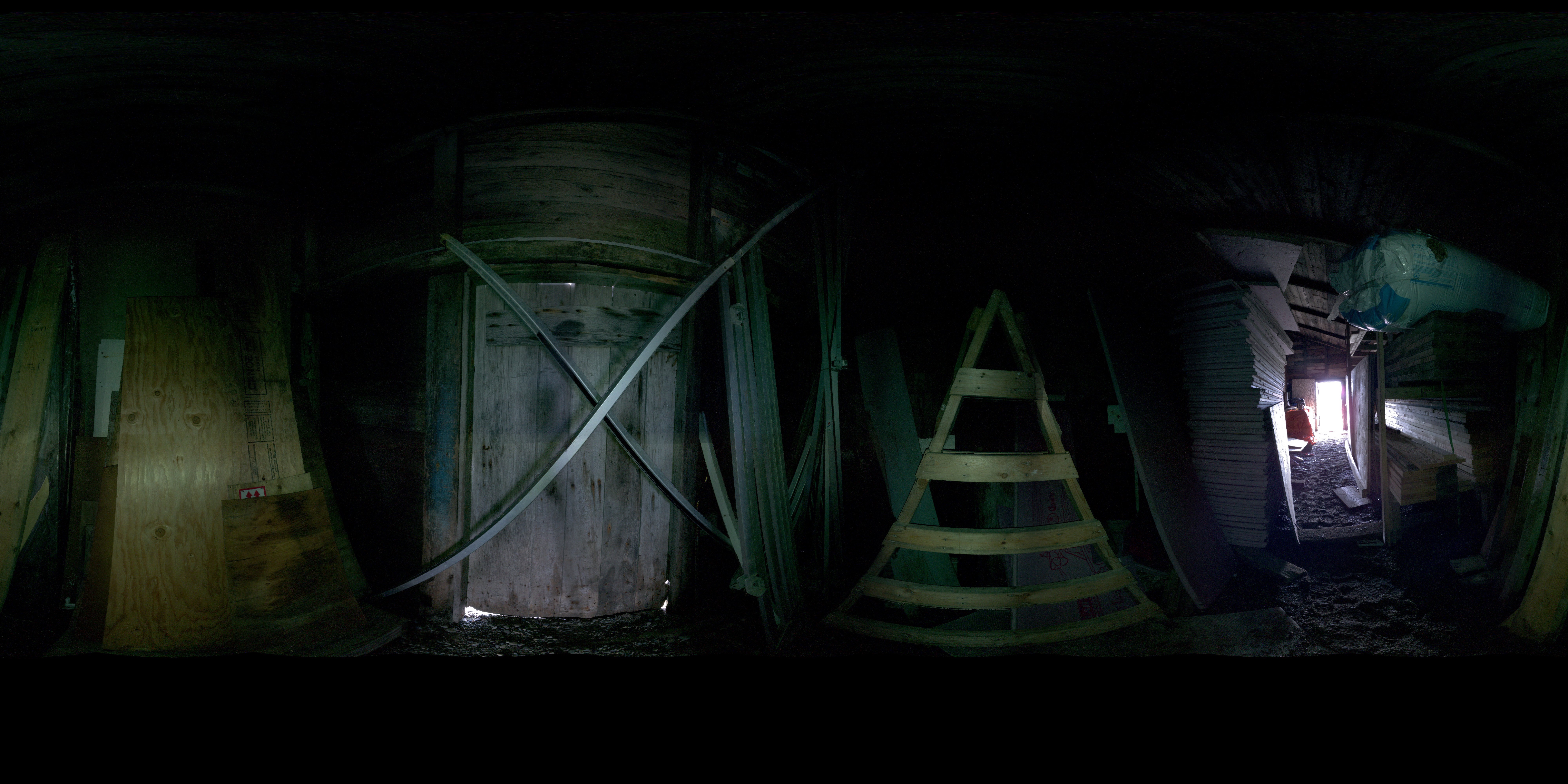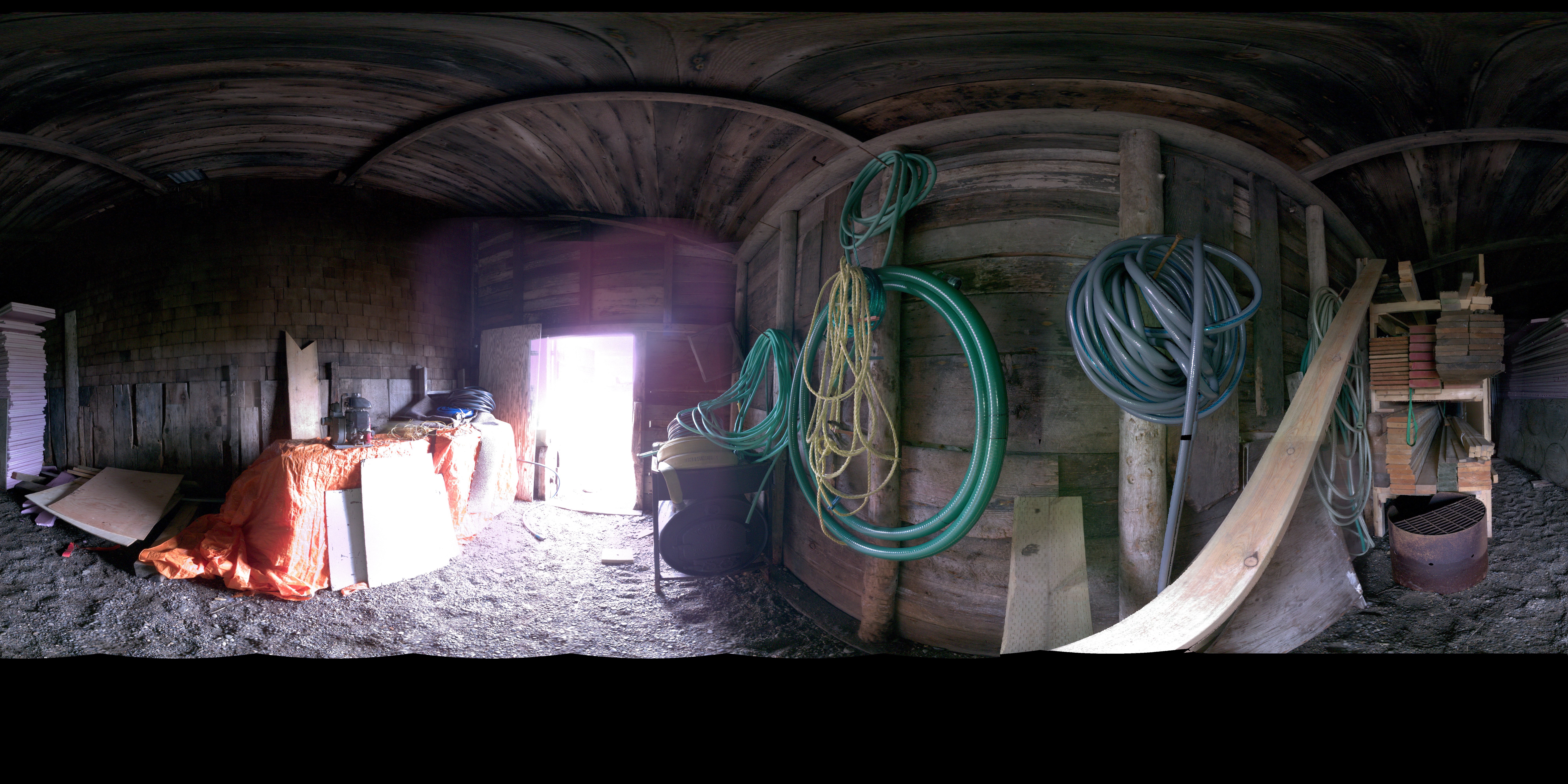Pacific Steam Whaling Co. Bonehouse
The Pacific Steam Whaling Co. constructed the Bone House in the 1890s for use as a warehouse. The Mounted Police continued to use this building for this purpose until they left the island. Minor repairs have been completed on this building in order to conserve it. Currently the centre bay of the building is used as an open storage area for artifacts that have been found on the island while the side bays are used to store materials and equipment used in the Park.
Region:
Yukon
Field Documentation:
August 16, 2018
Field Documentation Type:
Terrestrial LiDAR
Historic Period:
1893CE
Latitude:
69.569203
Longitude:
-138.914939
Threat Level
History
During the late 19th century the whaling industry expanded to the Beaufort Sea. This industry was driven by a demand for oil and baleen, a highly popular construction material valued for its combined strength and flexibility [1]. As whale stocks began to be depleted, whaling ships started to sail into the Beaufort Sea to hunt whales, particularly bowheads. In 1890 the Mary D. Hume ship of the Pacific Steam Whaling Company (PSWC) was the first to reach the island. The Pacific Steam Whaling Co. built their first buildings, the company warehouse and the Pioneer House, in Avadlek Spit in August 1890 [1]. However, after getting unexpectedly frozen in Pauline Cove on September 18th, the company was forced to relocate their supplies.
The exact date for the construction of the Pacific Whaling Co. Bonehouse, or building No. 5, is unknown but historic photographs indicate it was built shortly after the community house was constructed in 1893 [1]. Likely built in 1894, the bonehouse was constructed to be used as a storage warehouse for baleen, the flat pieces of protein that help a whale sieve small fish and plankton out of mouthfuls of sea water [2]. The baleen’s combined flexibility and strength made it a popular material for the construction of items such as corset stays, parasol ribs, and buggy whips [2].
For a short while before 1901 Reverend Isaac O. Stringer used the building to hold church services in, and by 1909 it was used as a warehouse for the North-West Mounted Police who had a sub-district headquarters post in Pauline Cove [1,2]. Until the dog kennels were constructed, the west shed of the bonehouse was also used as a kennel for the police dog teams [1]. The police continued to use the building until they left the island in 1964 [1]. Since then, minor repairs have been conducted to maintain the building in its current condition [1,3].
Construction
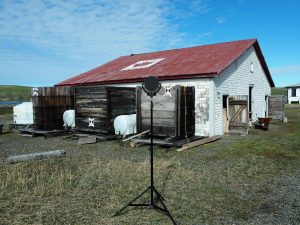
The bonehouse is a frame building approximately 12.4 m by 10.5m constructed with a gable roof [1]. The interior of the building includes separately framed lean-tos along the east and west sides, which are approximately 2m wide [1]. The framing is exposed on the interior of the building as well as inside these two side sheds; the centre is floored with heavy boards while the side sheds have no flooring. There are six doors in the building, with entrances to all three parts in the north and south walls. There is also a window in the south wall of the main building [1].
The exterior walls of the bonehouse have canvas over board sheathing, which are clad in cedar shingles [1]. The roof was also originally a clad in cedar shingles over board sheathing; at a later date the roof shingles were covered with corrugated metal sheeting. On the west slope this was painted with a Canadian flag [1].
The building also has three extant water tanks. Water tank 1 has a capacity of 7,000 litres and was the last of the three of these to be constructed; it does not appear in historic photographs of the bonehouse and was likely added in the 1940s or 1950s [1]. Water tank 2 has a capacity of 5,800 litres and water tank 3 is the smallest of the tanks with a capacity of 2,800 litres. These are both visible in historic photographs that date to the 1920s or 1930s and it is unknown which was constructed first [1]. In a historic photo dating to 1923 shows a different single water tank in this location which no longer exists [1].

Current Condition
Currently, the side bays are used for material and equipment storage by park management [1,3]. The centre bay of the building is used for the storage and display of artifacts that have been found on the island. Visible in the roof-cut-away point cloud of the bonehouse are some of these artifacts such as some of the remains of the scuttled USS Triton, including the mast, triworks, and hardware as well as various parts from the St Roch. Also visible in the scan are various historic and pre-contact artifacts associated with the Euro-North American and Inuvialuit occupation of the island.
Notes
[1] Preservation Plan. 1990 Herschel Island Historic Resources Preservation Plan. Final report, December, prepared by Heritage Branch, Department of Tourism, Yukon.
[2] Yukon Government. 2011 Herschel Island: Qikiqtaruk. A Guide to Historic Resources. Electronic document, https://yukon.ca/sites/yukon.ca/files/tc/tc-herschel-island-qikiqtaruk-guide.pdf, accessed March 11, 2020.
[3] Yukon Environment. 2006 Herschel Island Qikiqtaruk Territorial Park Management Plan. Prepared with the Inuvialuit Game Council, the Aklavik Hunters and Trappers Committee along with the Wildlife Management Advisory Council (North Slope) for the Yukon Government.
This gallery contains images of the exterior and interior of the Bone House – both in the past and as it appeared in 2018 and 2019. Also included is an image of a 3D printed model of the Bone House which was created using the scanning data.

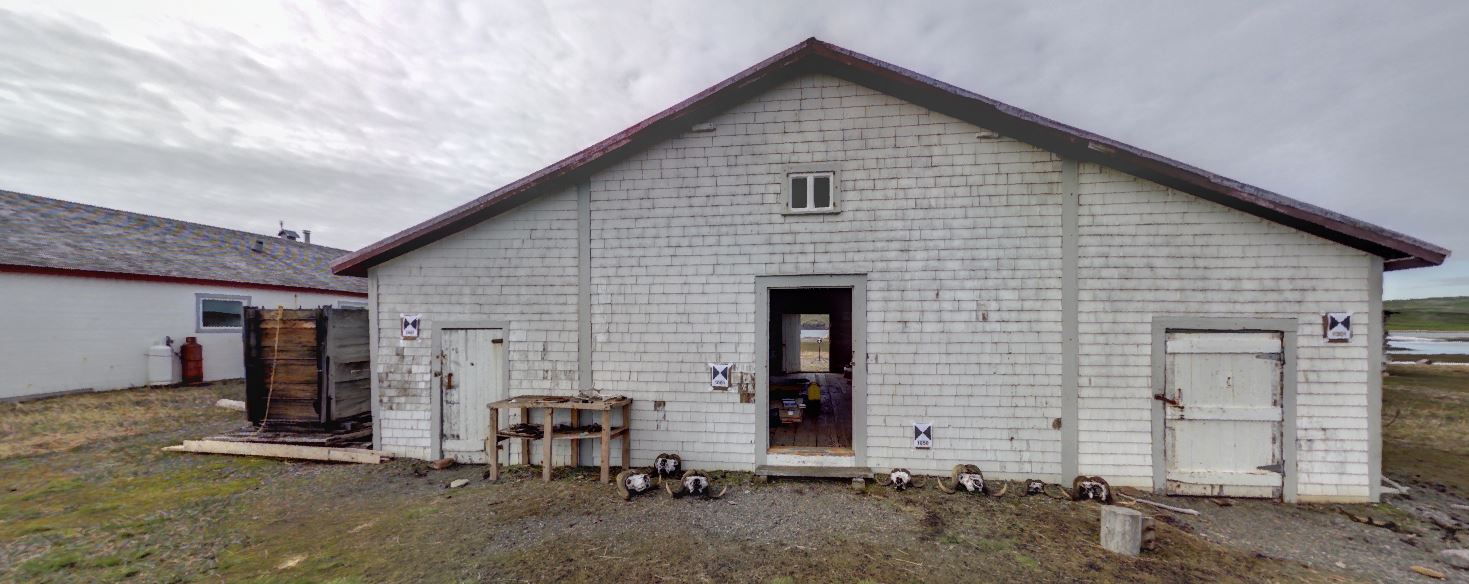
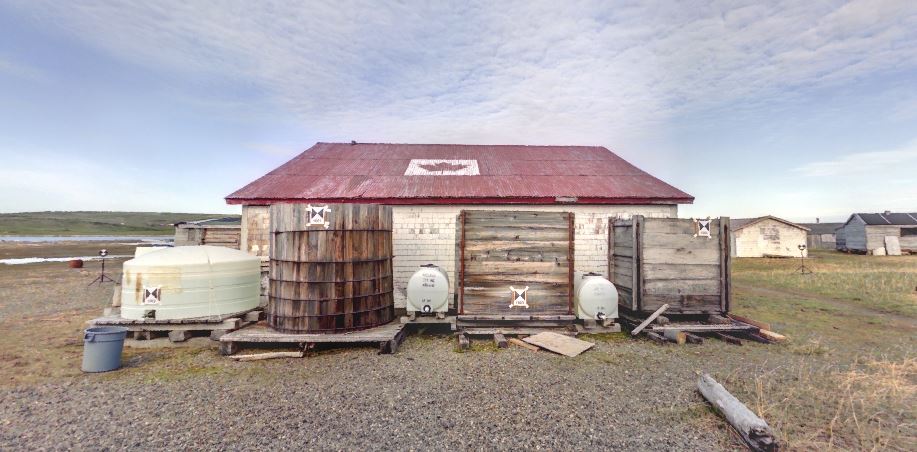
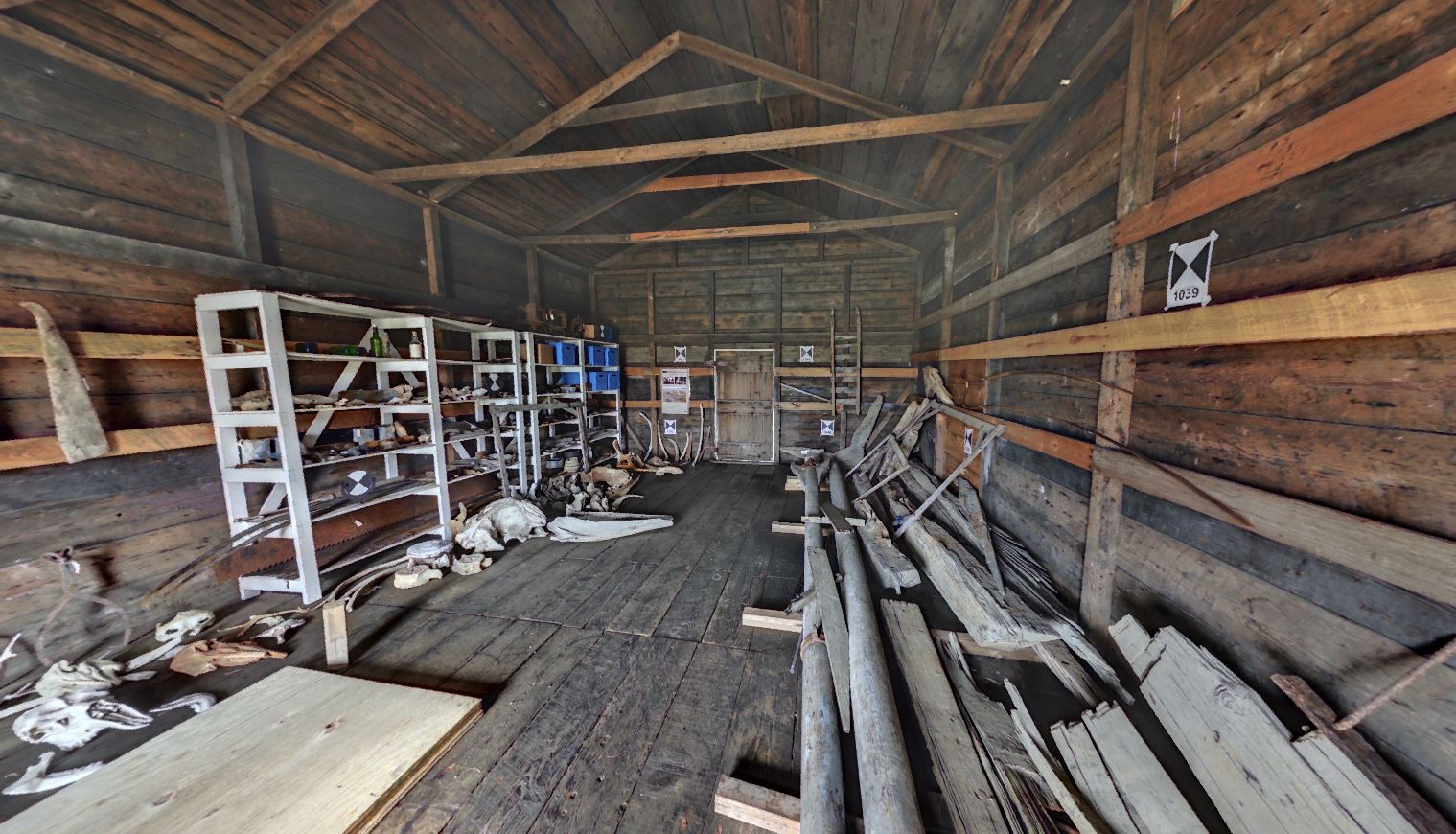
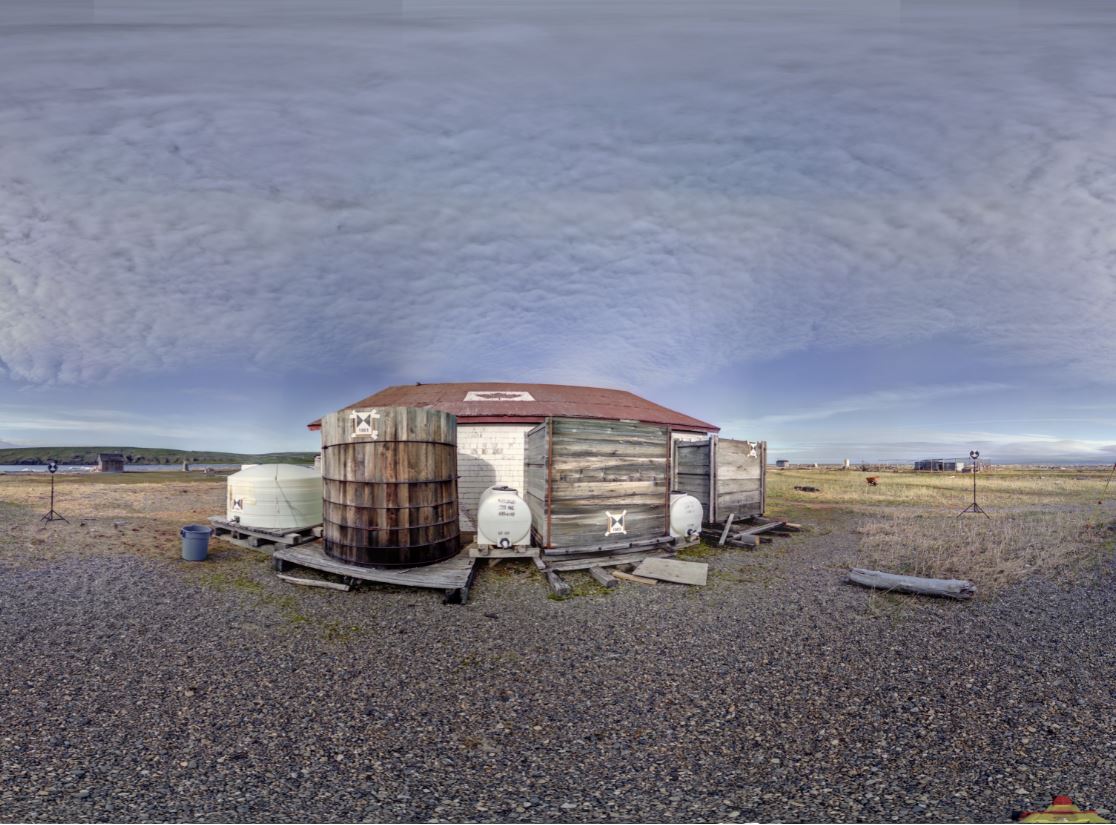
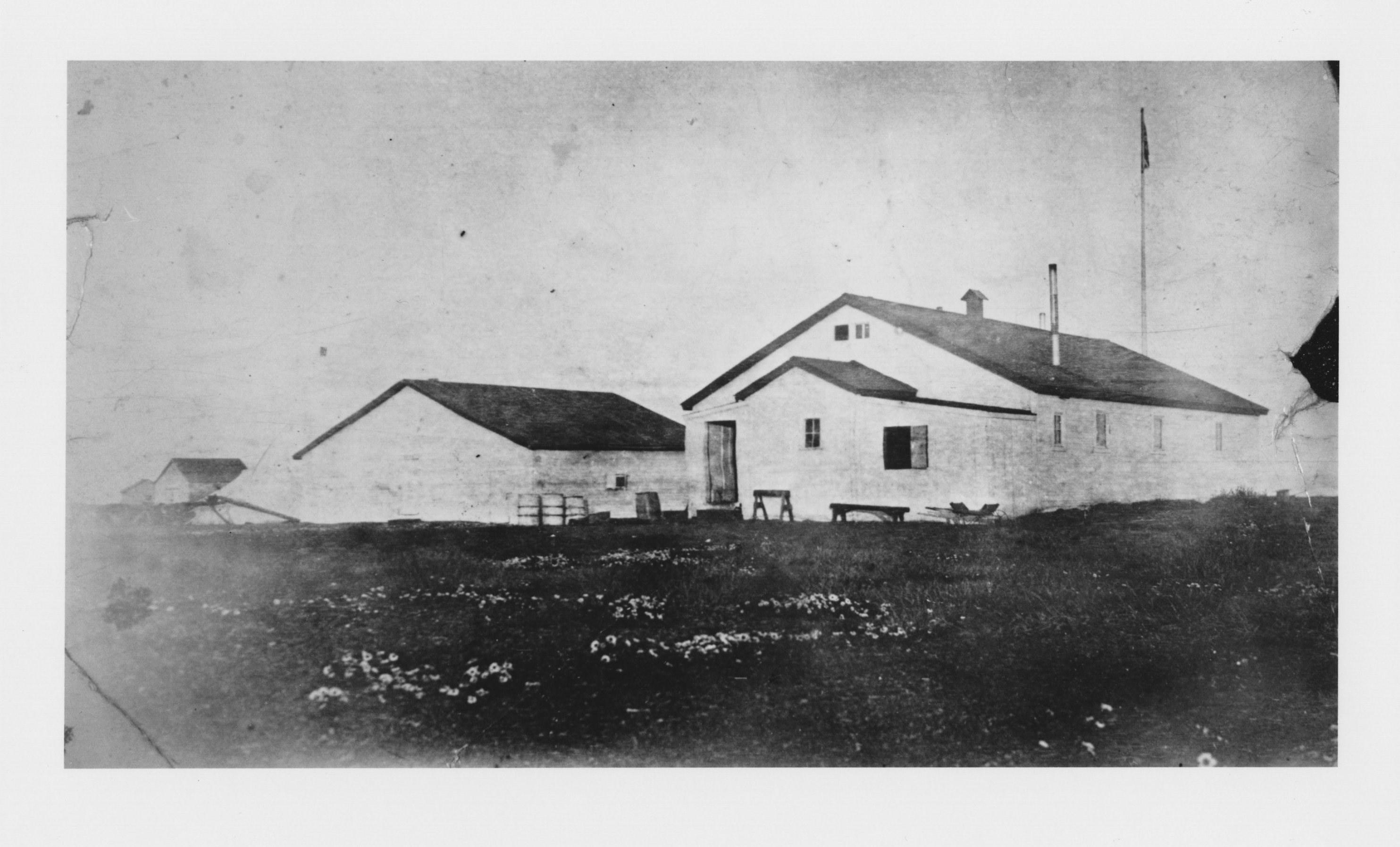
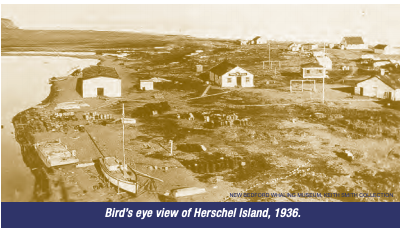

Open Access Data
The raw data files for this project are available for download from the archive repository. Scans are .las file format. Please download the metadata template to access metadata associated with each file. All data is published under the Attribution-Non-Commercial Creatives Common License CC BY-NC 4.0 and we would ask that you acknowledge this repository in any research that results from the use of these data sets. Please be aware that this data set contains the unregistered east and west wings to the main Bonehouse scans. The data can be viewed and manipulated in CloudCompare an opensource software.
Click on the 3D model of Pauline Cove. Marker (1) shows the location of the Bone House within the settlement.
The architectural drawings below were created by Elizabeth Cook, a student in the School of Architecture, Planning and Landscape (SAPL) at the University of Calgary. The drawings were created in Autodesk Revit BIM software using the point clouds captured by the Z+F 5010X and Leica BLK360 scanners. Building Information Modeling (BIM) involves the generation and management of digital representations of the physical and functional characteristics of spaces. We are currently exploring how BIM can be linked with heritage strategies currently used to manage the historic buildings at Pauline Cove – especially in light of current climate change impacts.
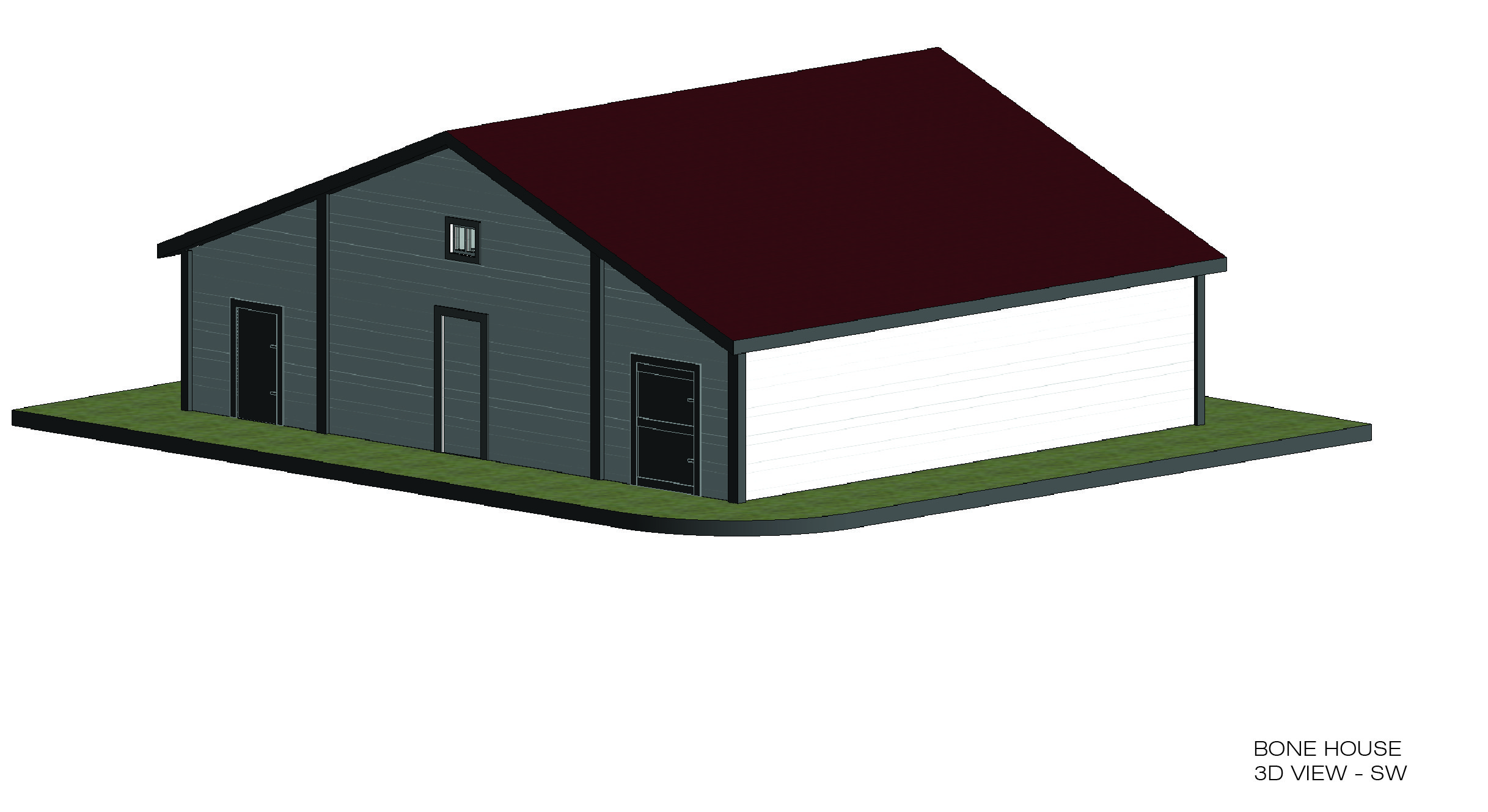
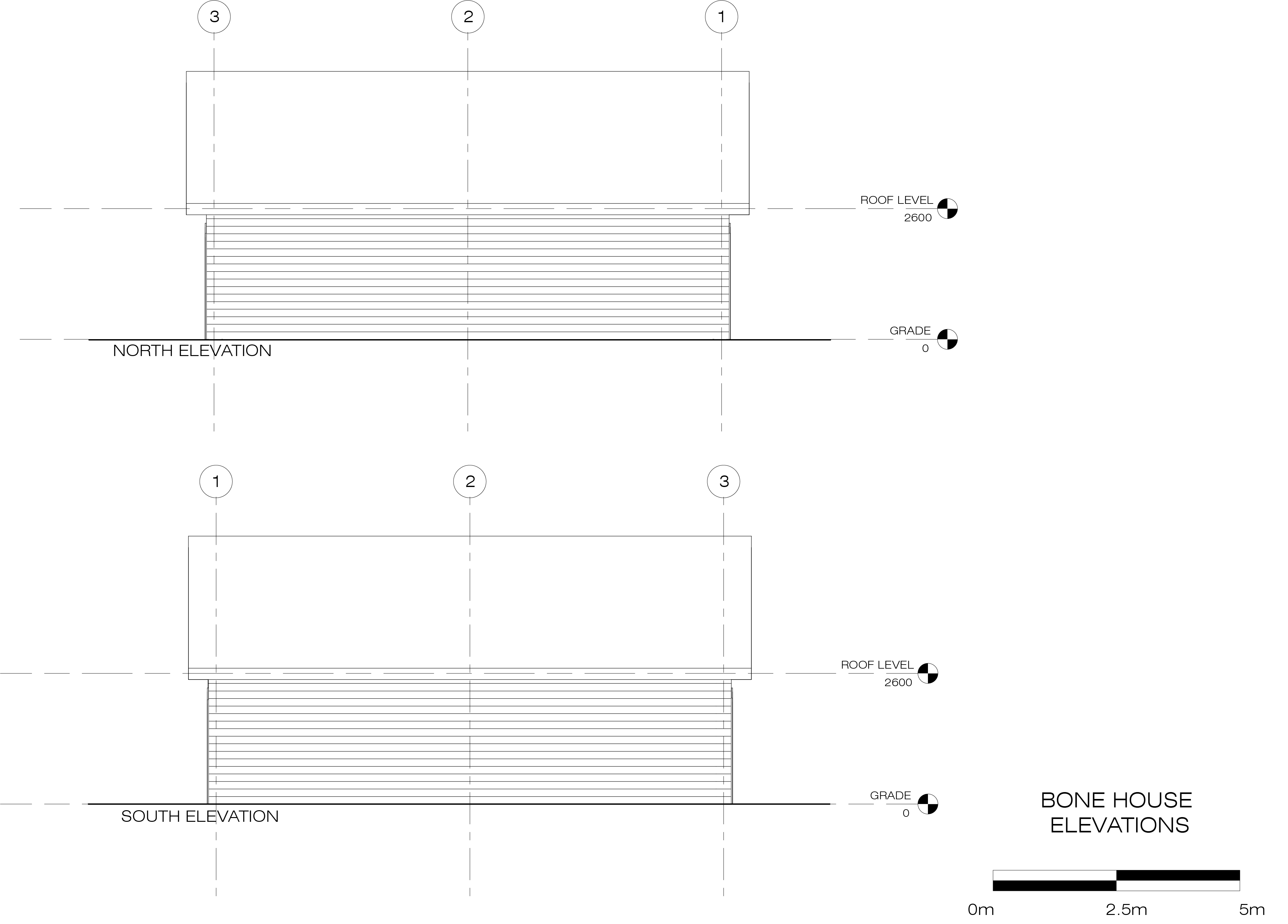
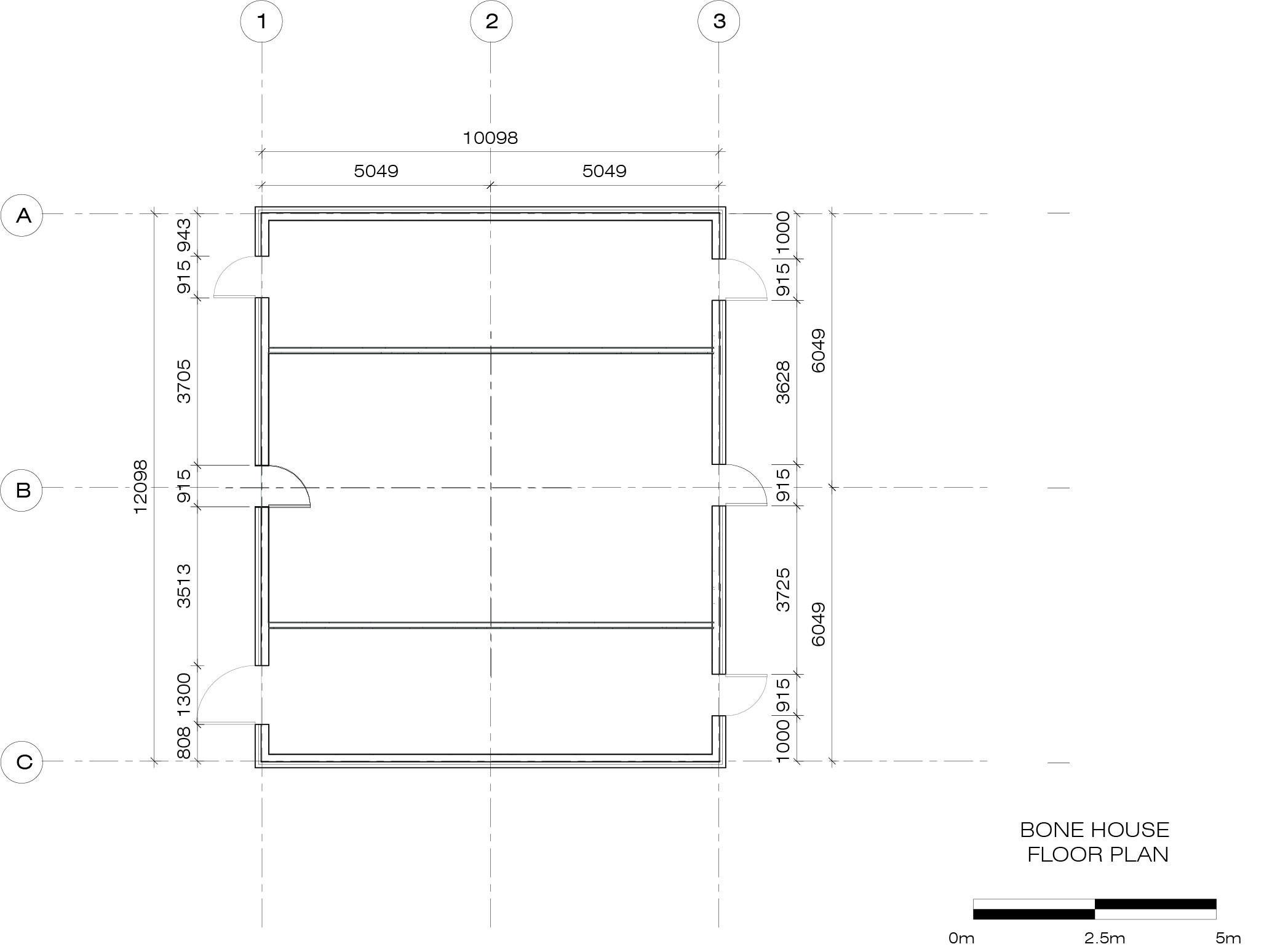

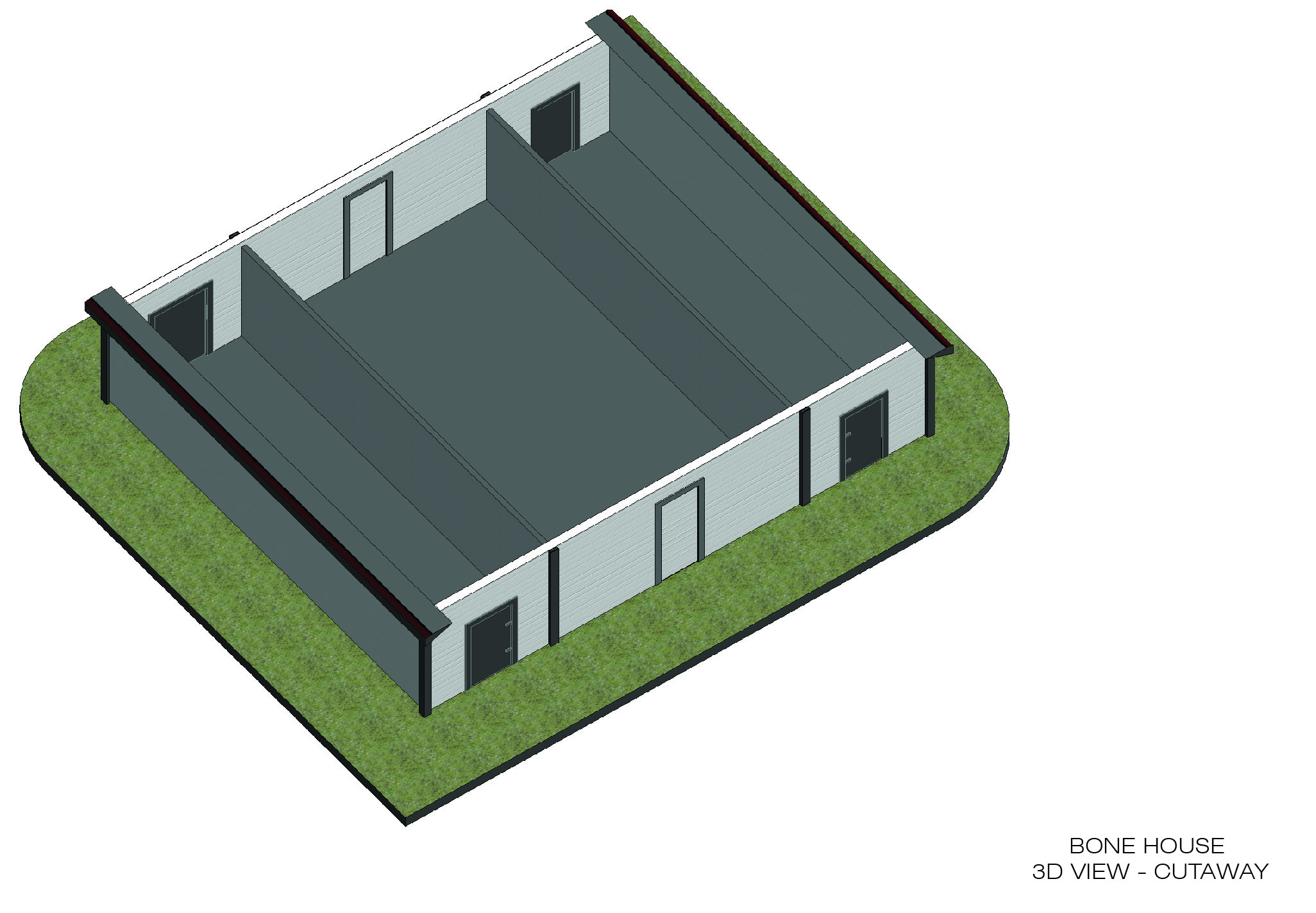
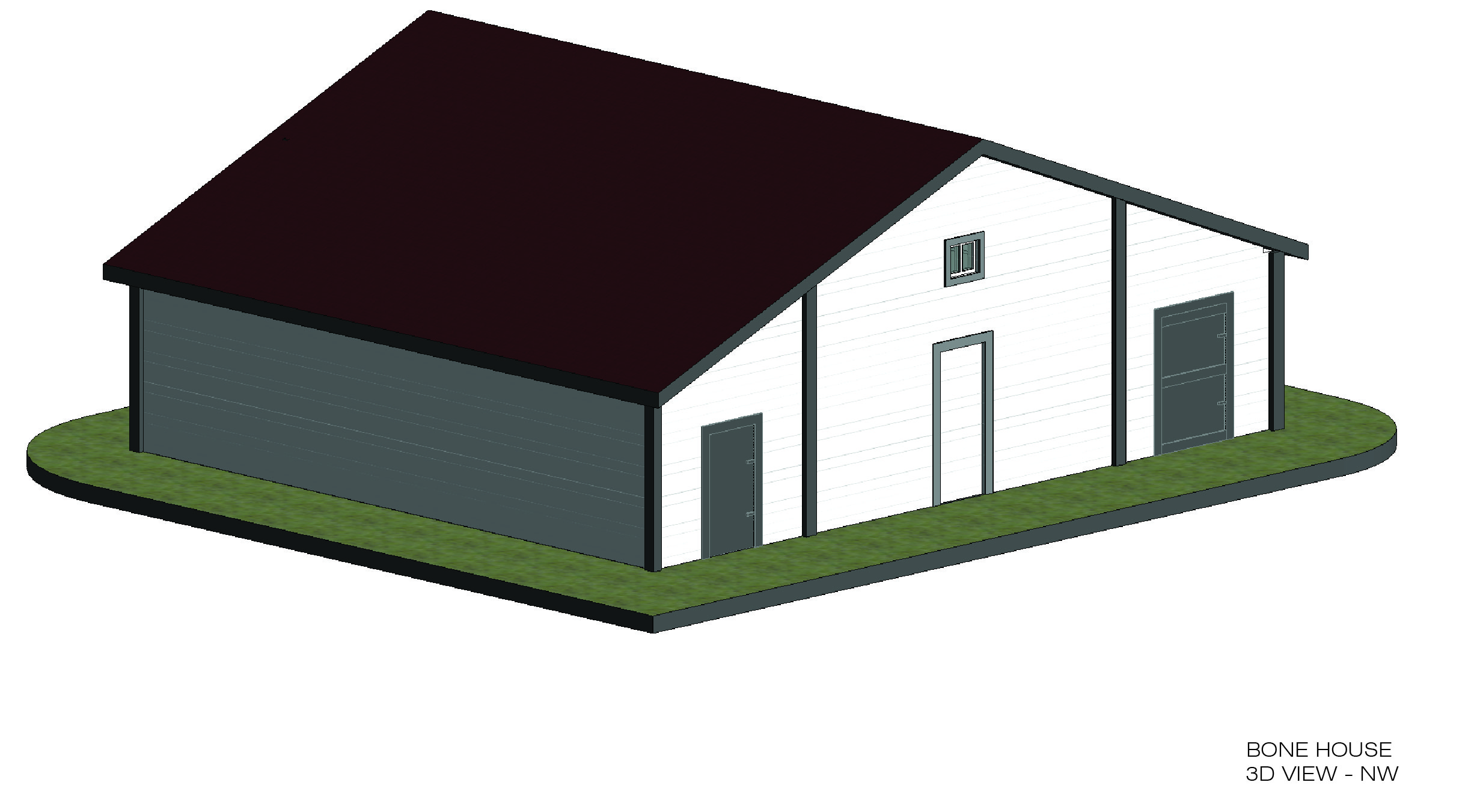
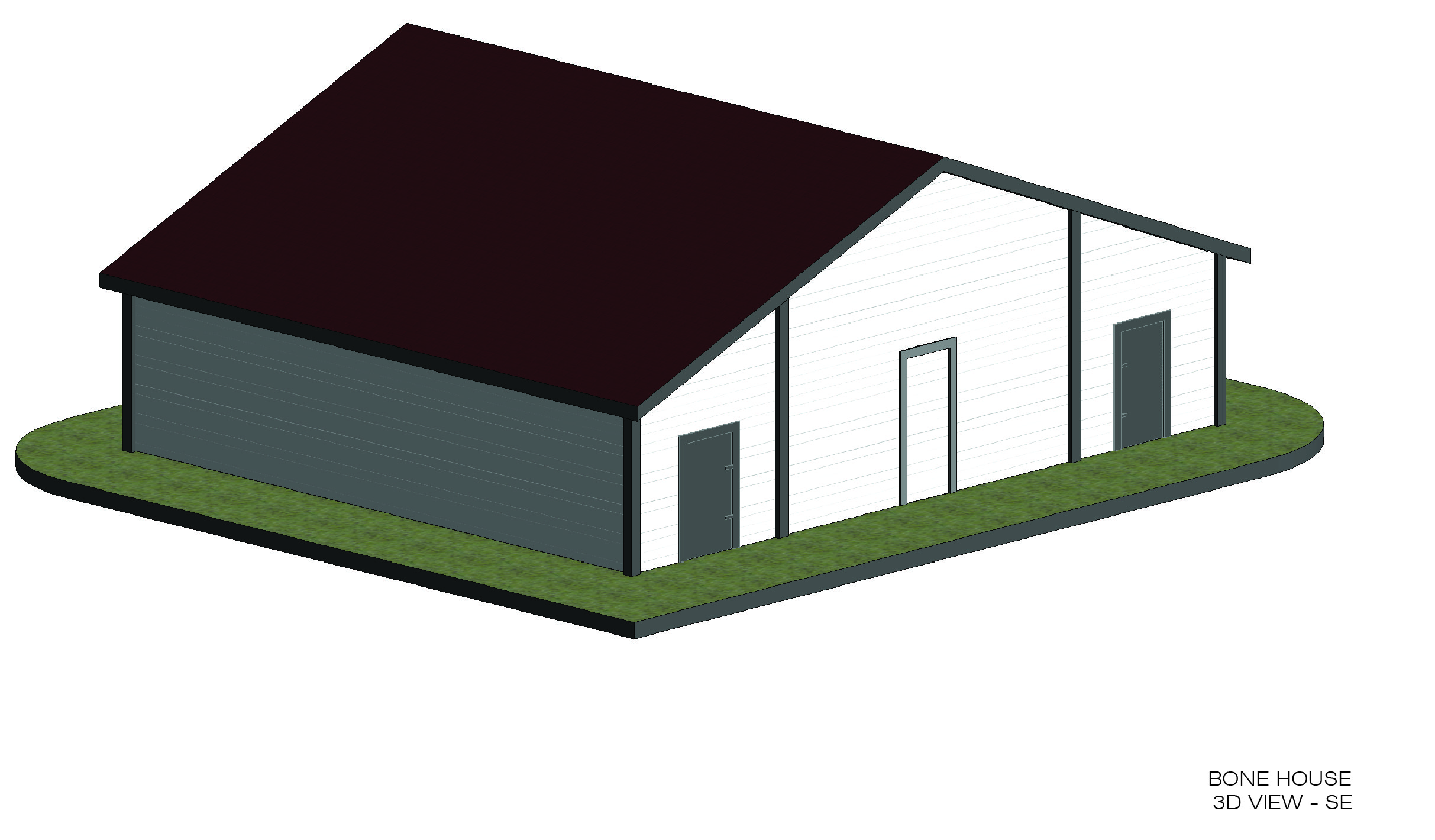

Digitally Capturing the Bonehouse
The Pacific Steam Whaling Co. Bonehouse/RCMP Warehouse was first digitally captured in July, 2018. The exterior was documented with a Z+F 5010X (red dots) scanner and mounted paper targets, using 14 scanning locations situated roughly in a circle around the bone house. The interior was also documented at this time, but only the center bay was captured using four scanning locations. To combine the exterior and interior scans, two scanning positions on the exterior were placed in front of the open doorways on the north and south sides of the building to capture portions of the interior. The interior and exterior scans were then registered together in AutoDesk ReCap Pro using cloud-to-cloud registration based on the common data from that scanning position. In July, 2019 the east and west side bays were captured using a Leica BLK 360 scanner (blue dots). No targets were used to capture the interior of the building, and scans were registered together using cloud-to-cloud registration in AutoDesk ReCap Mobile and Pro. Due to closed interior doorways, there was no line-of-sight connections between the 2019 and 2018 scans and these were aligned together manually in using Cloud Compare software.
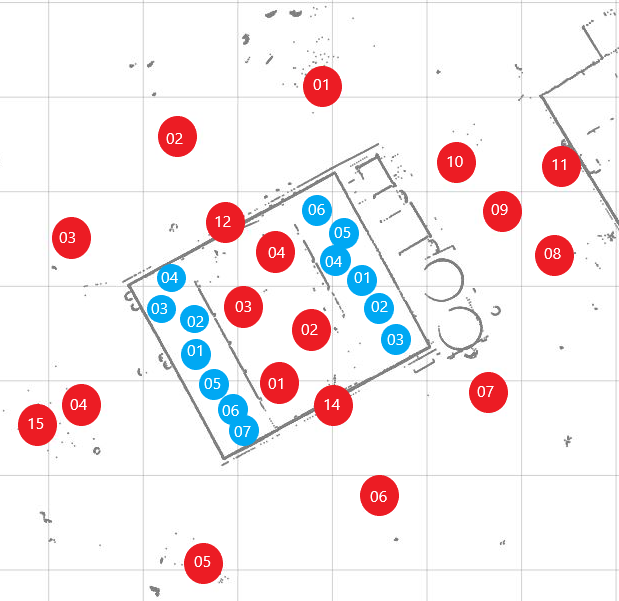
Scan Locations
